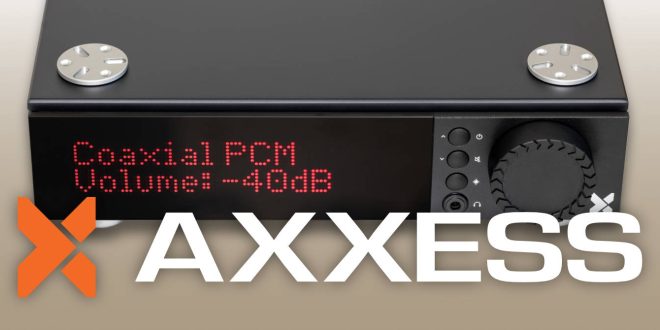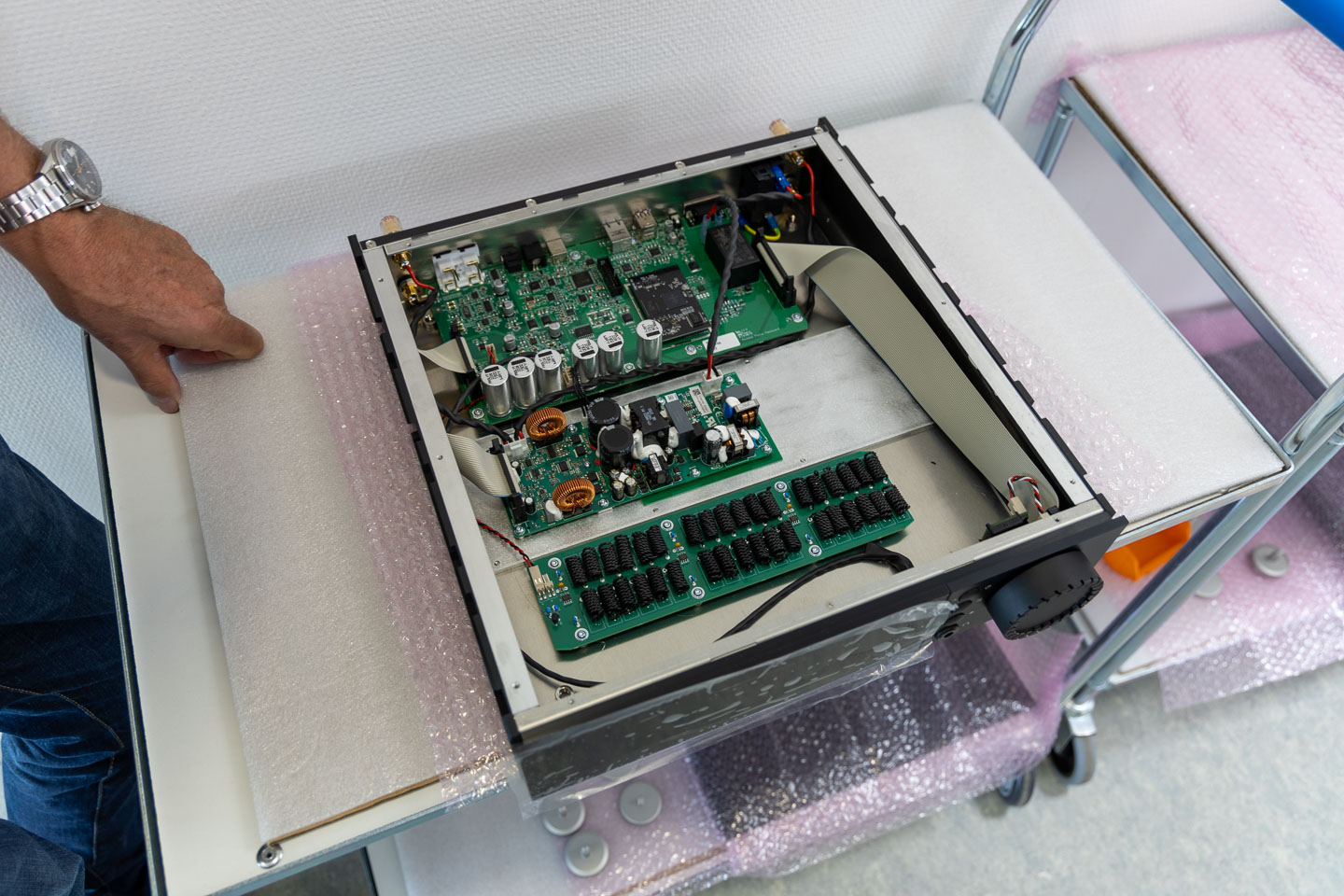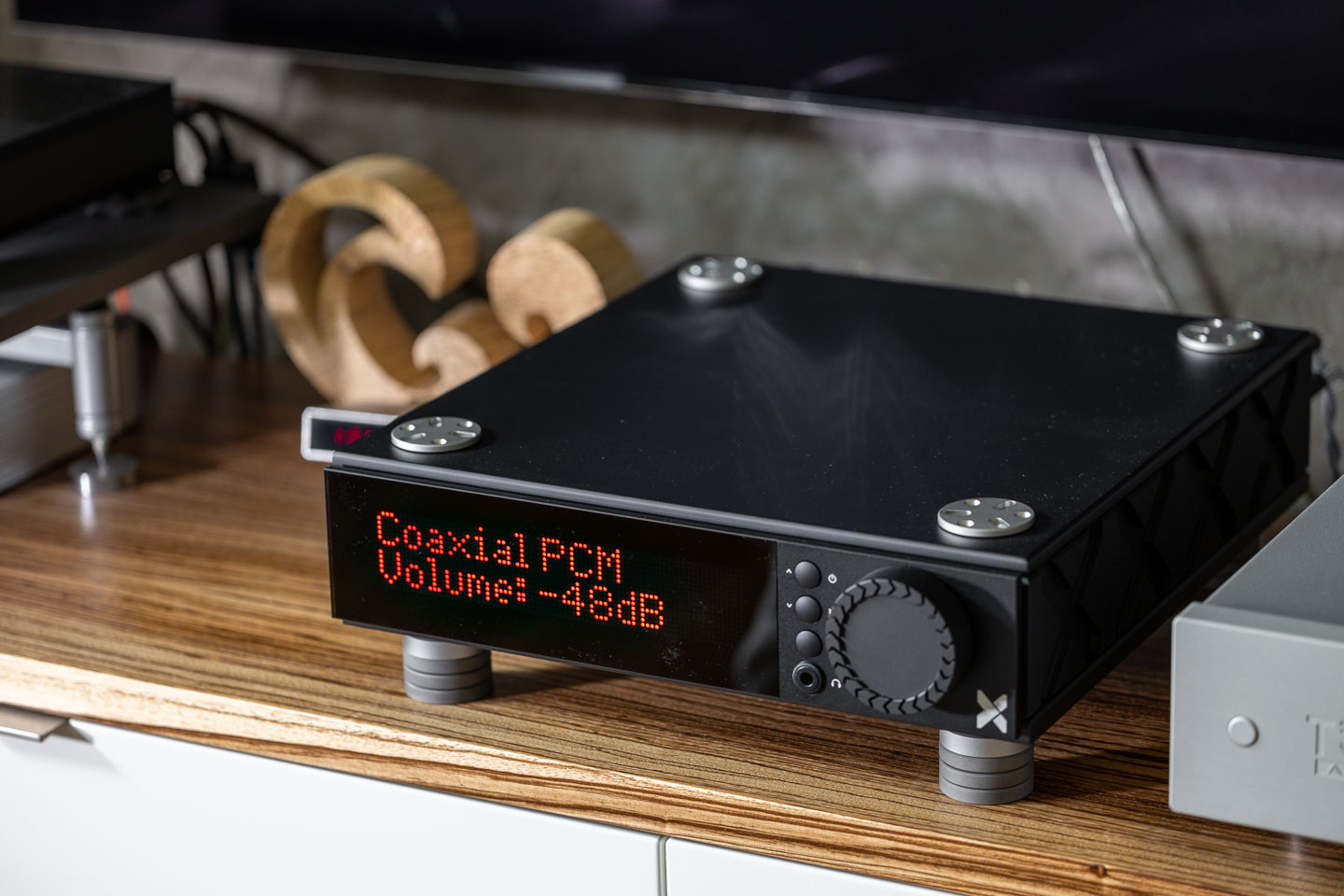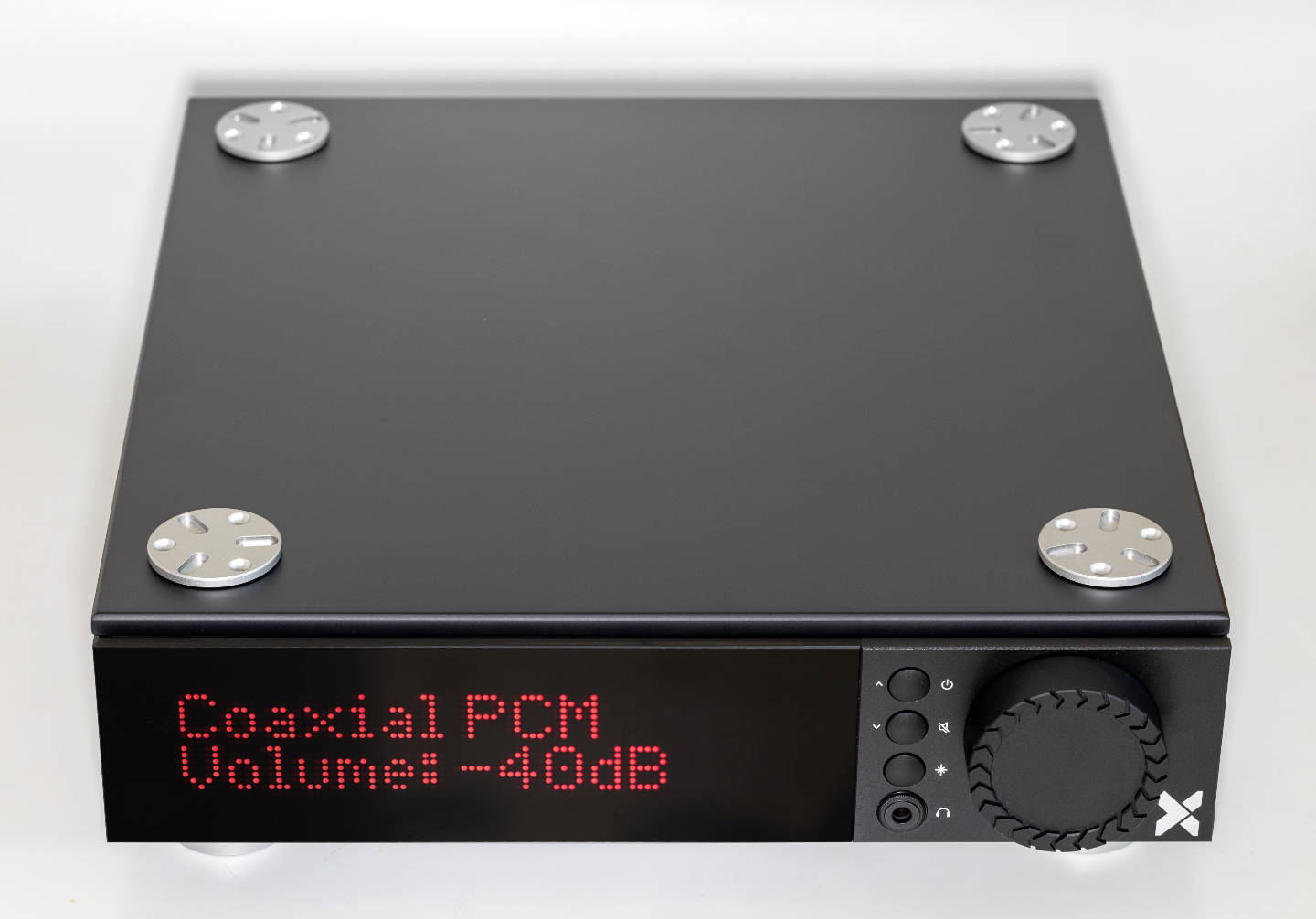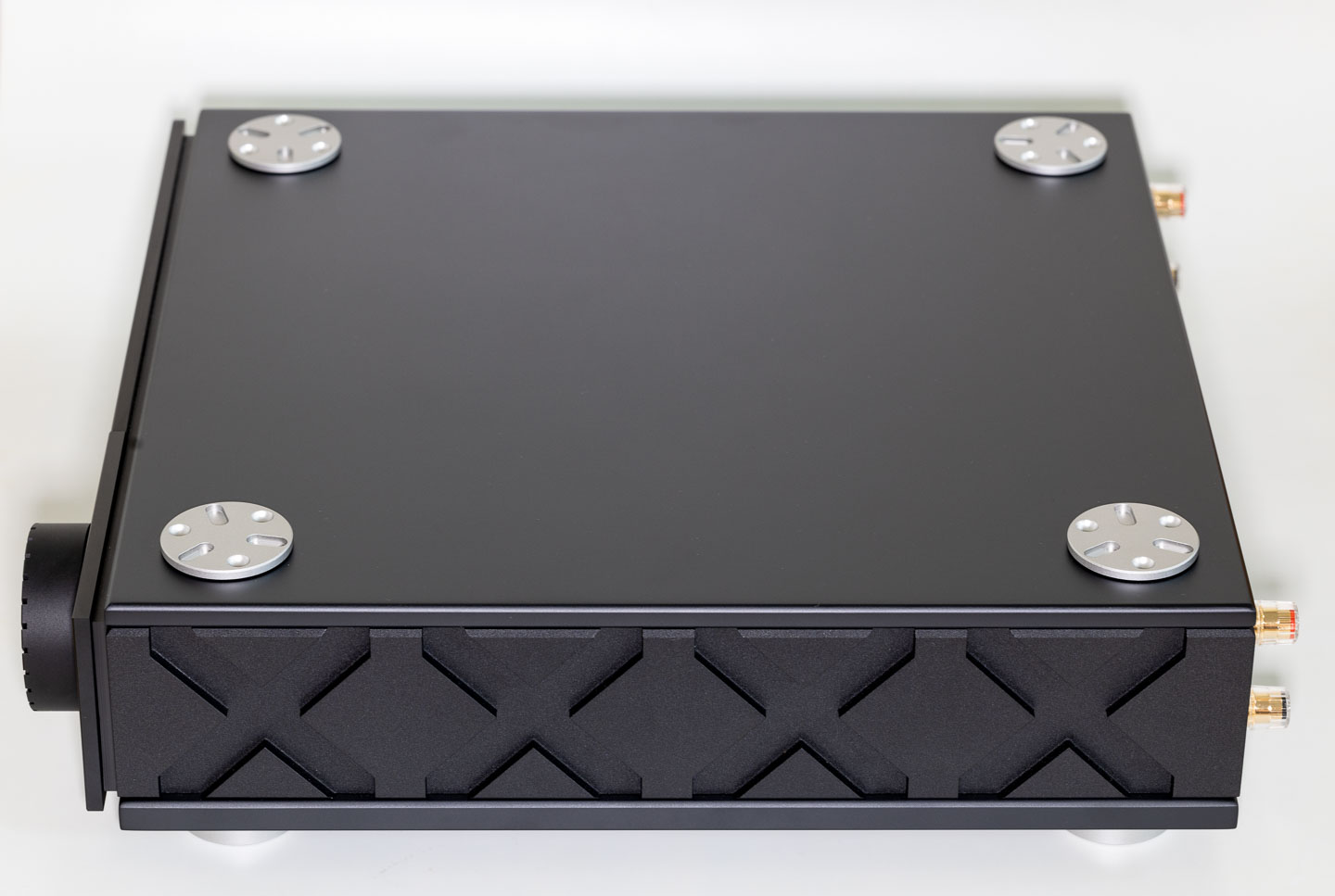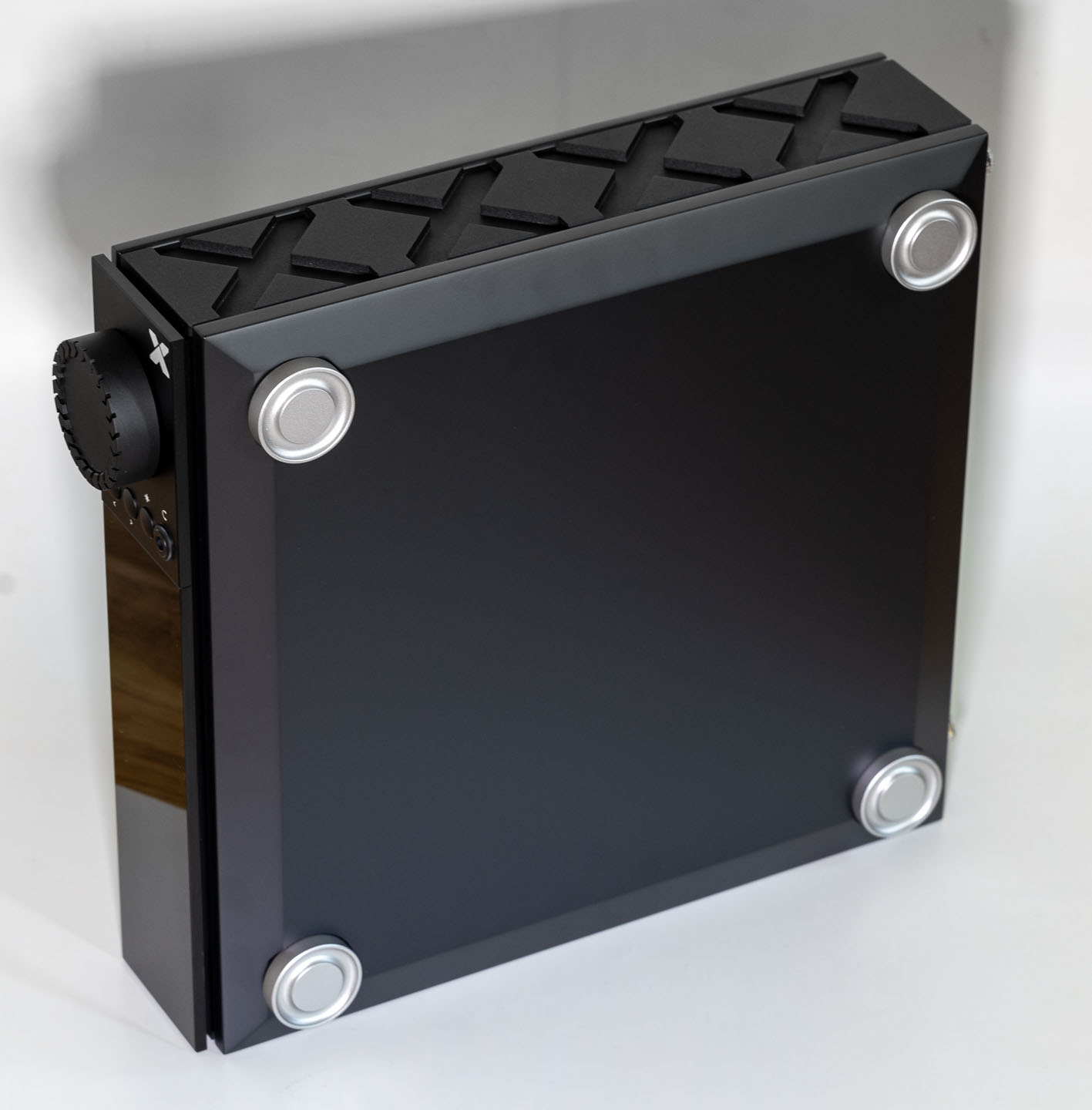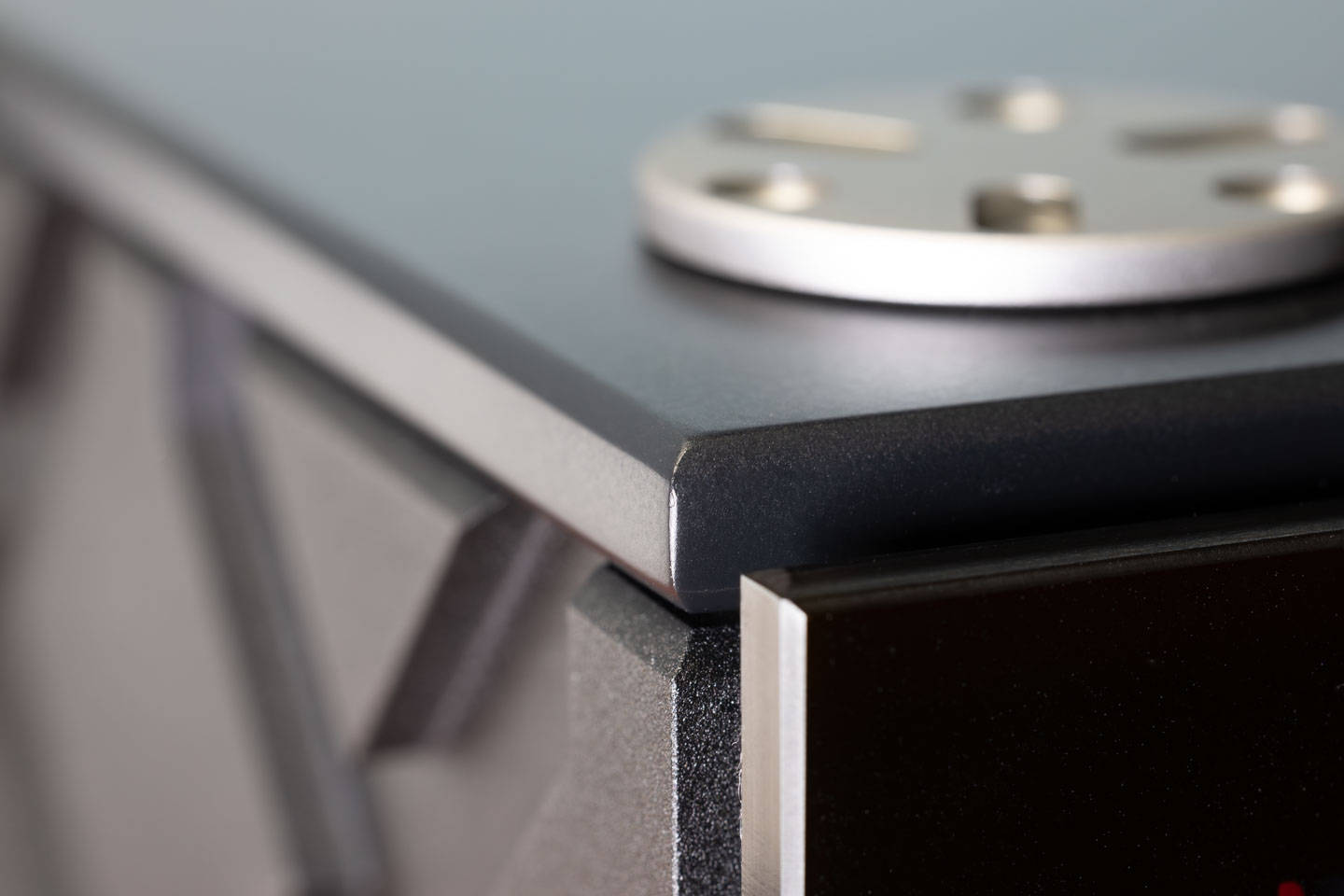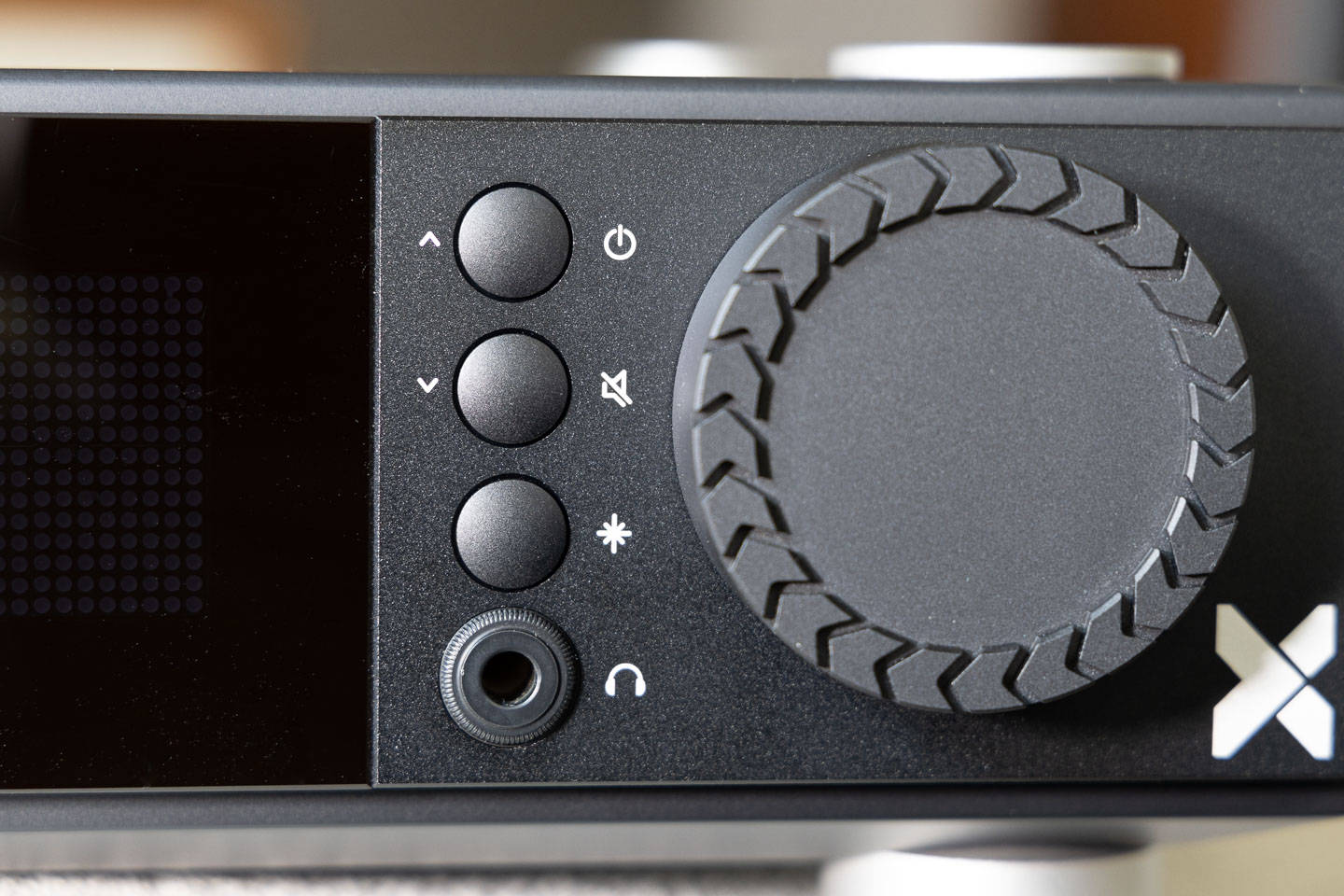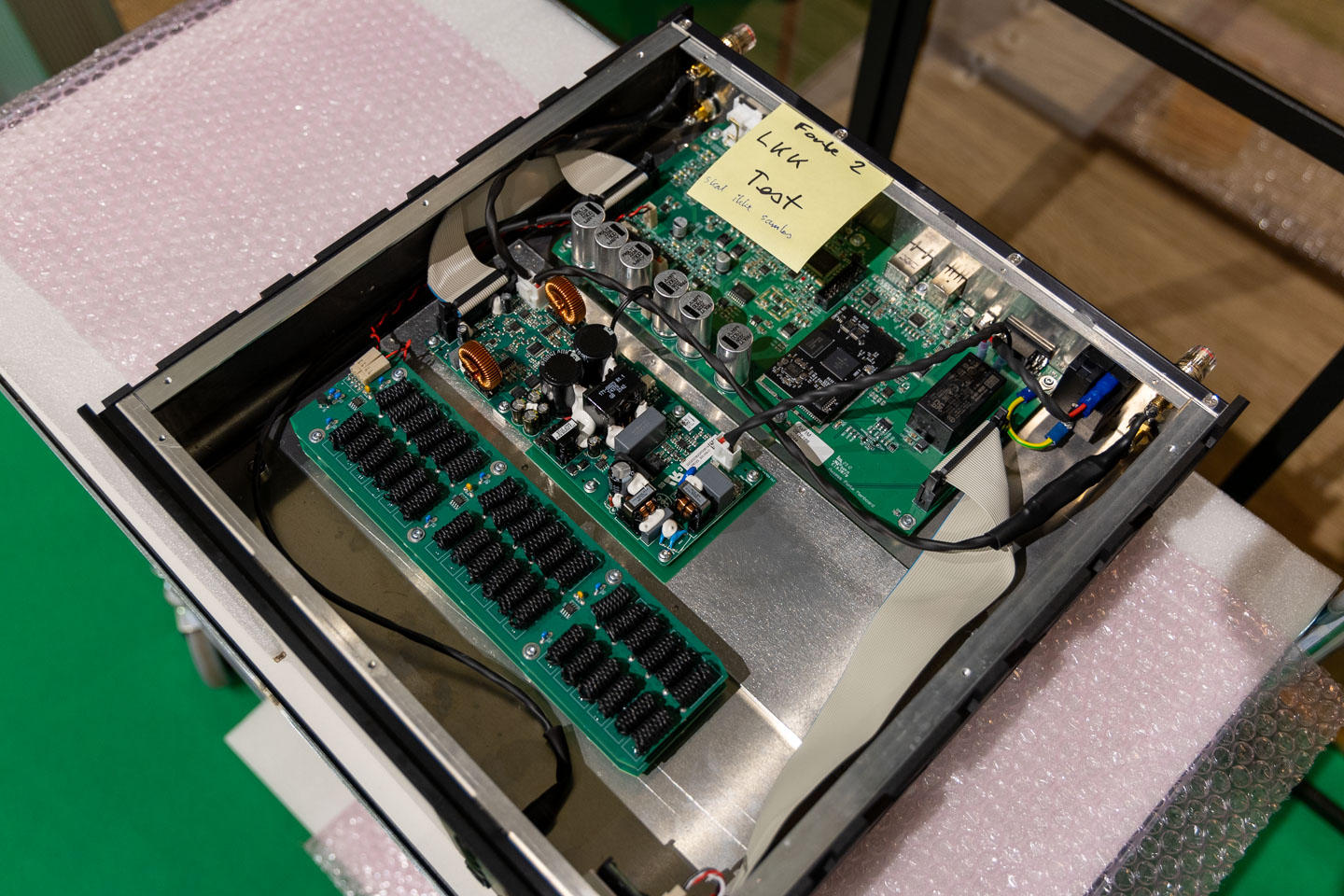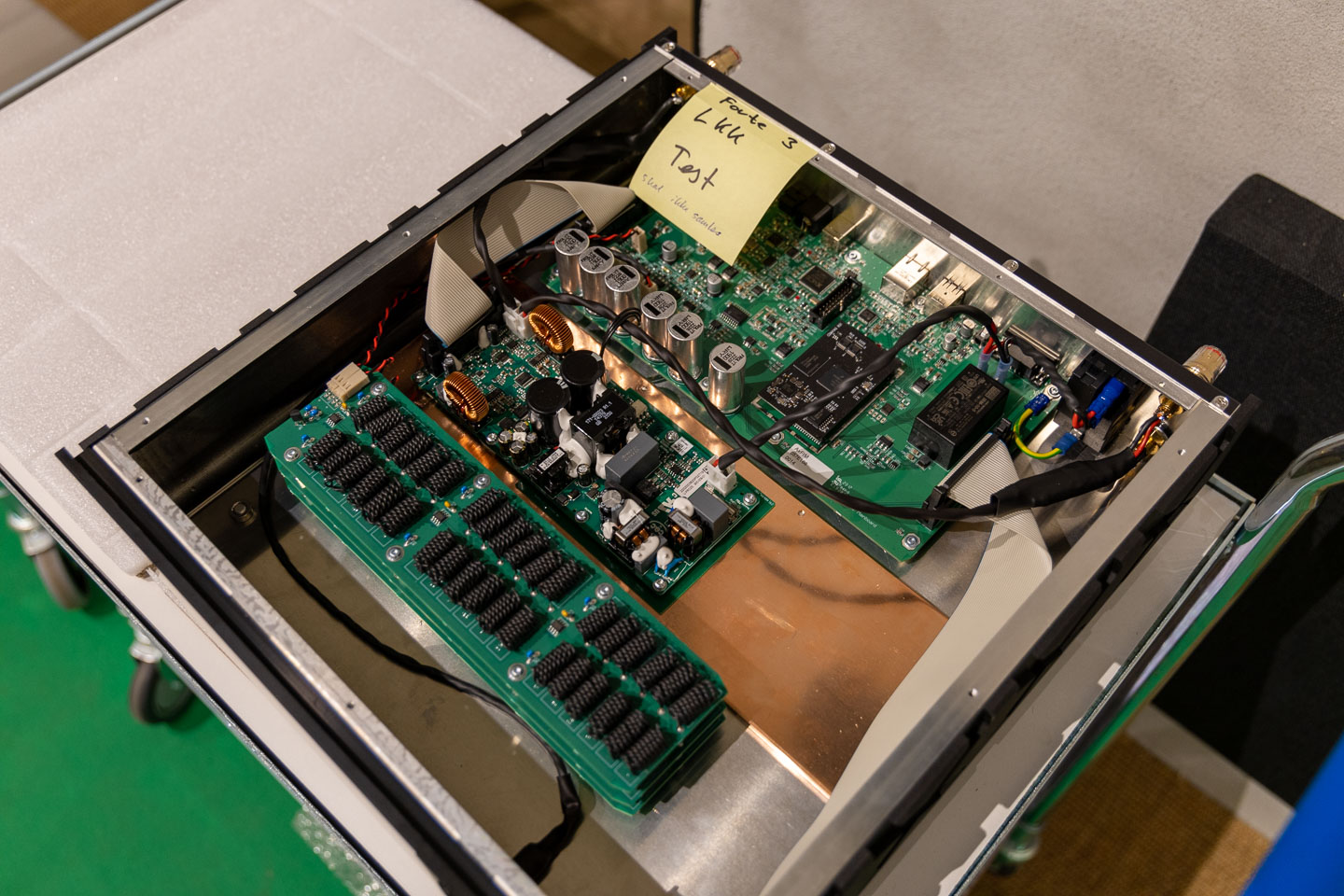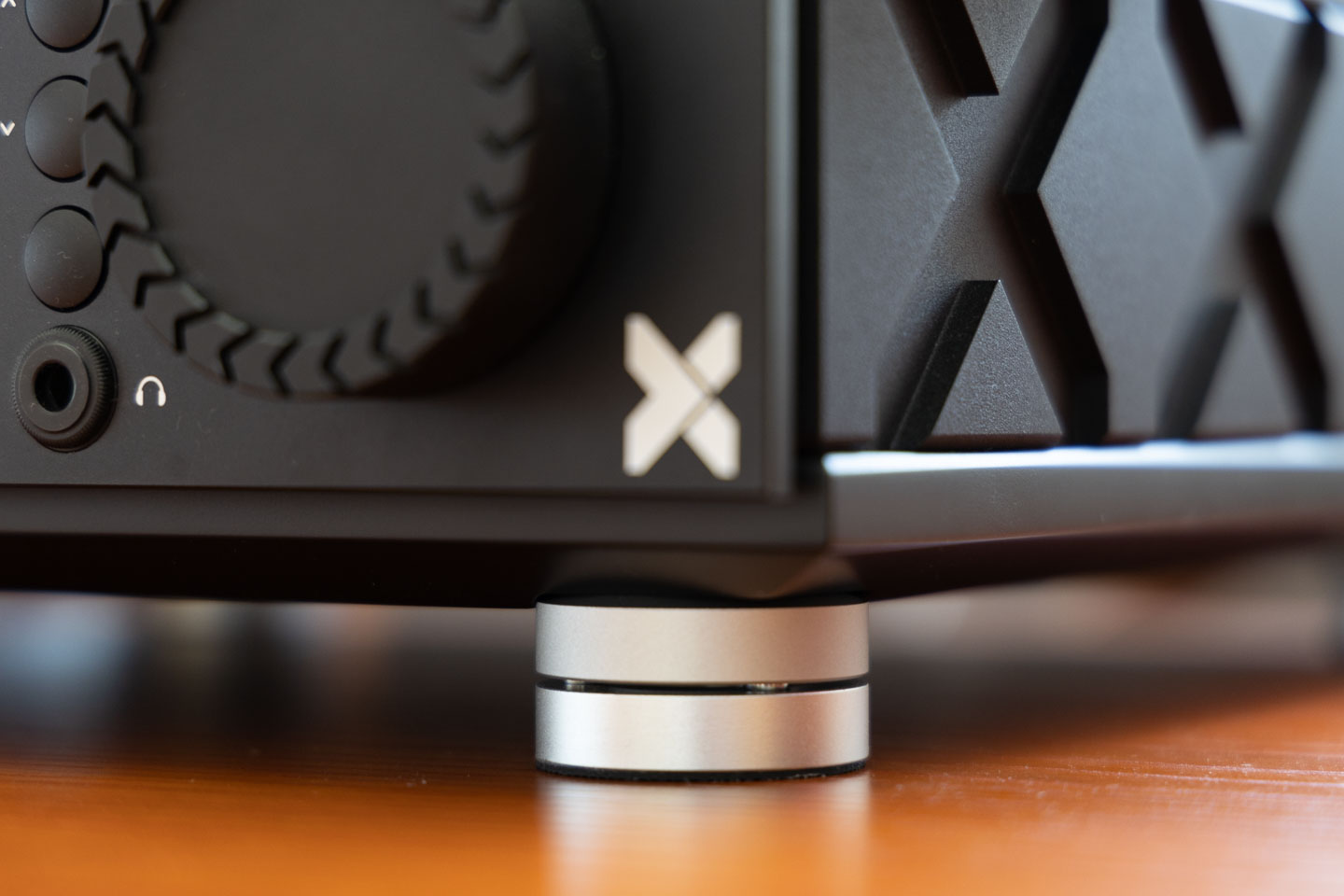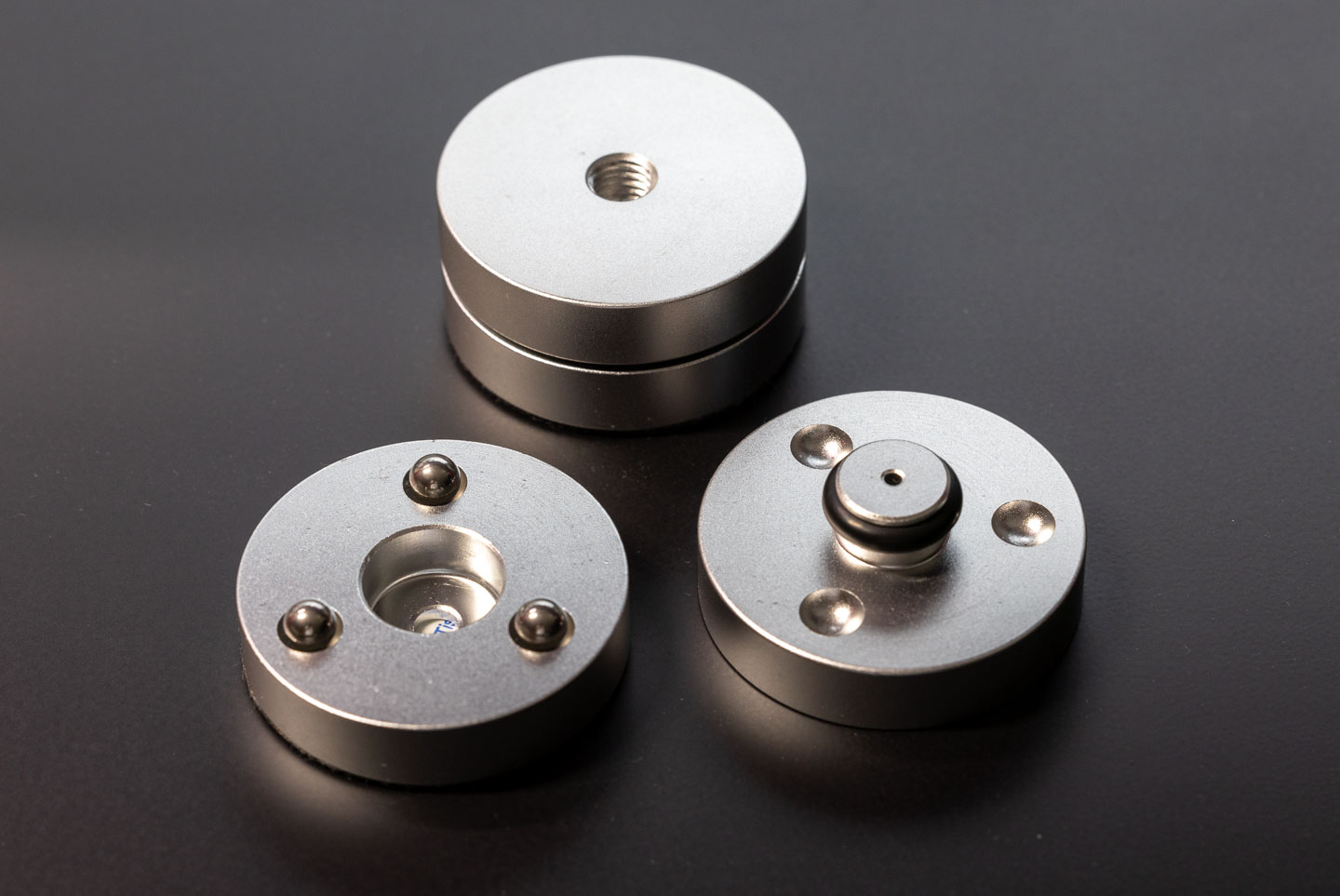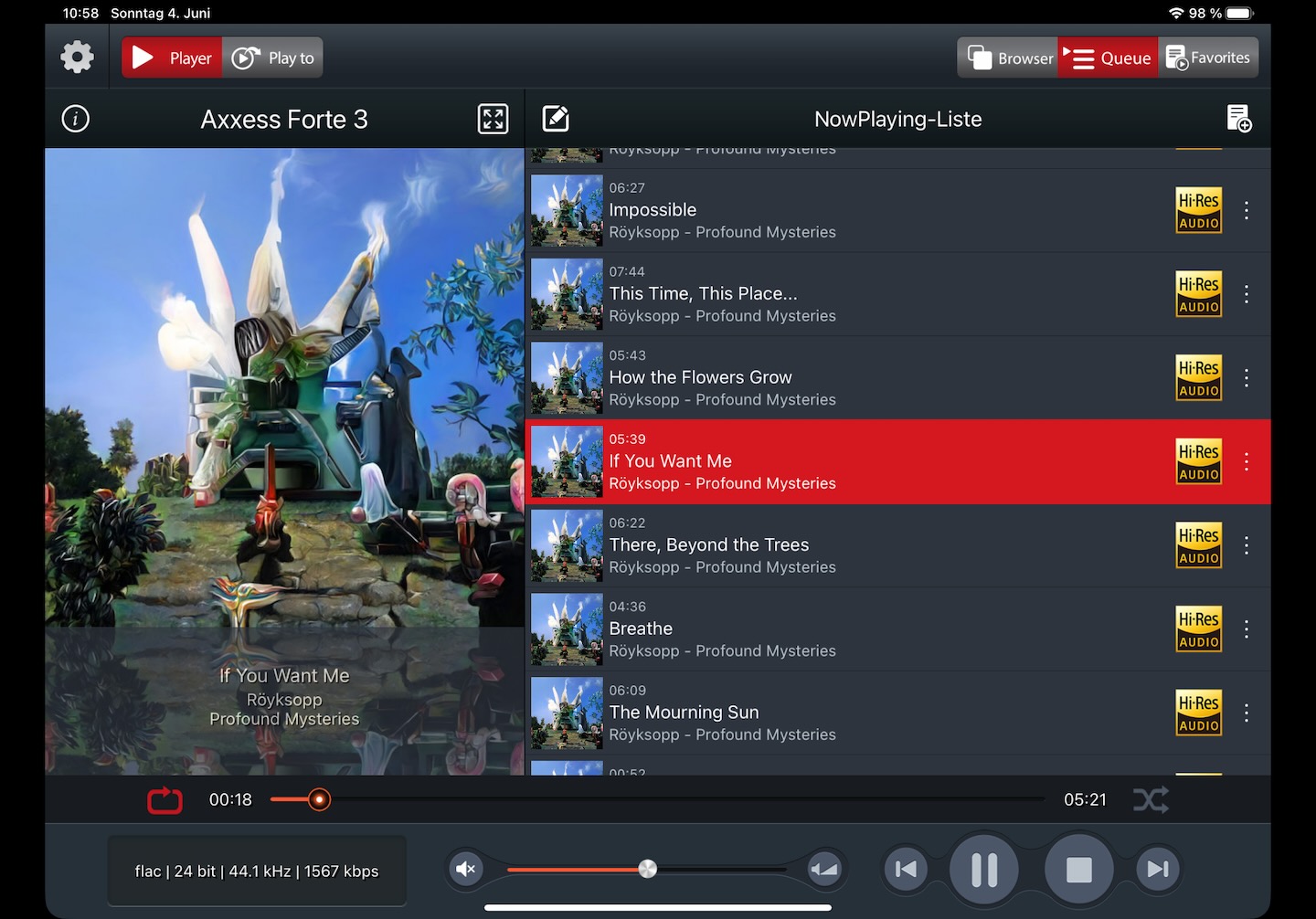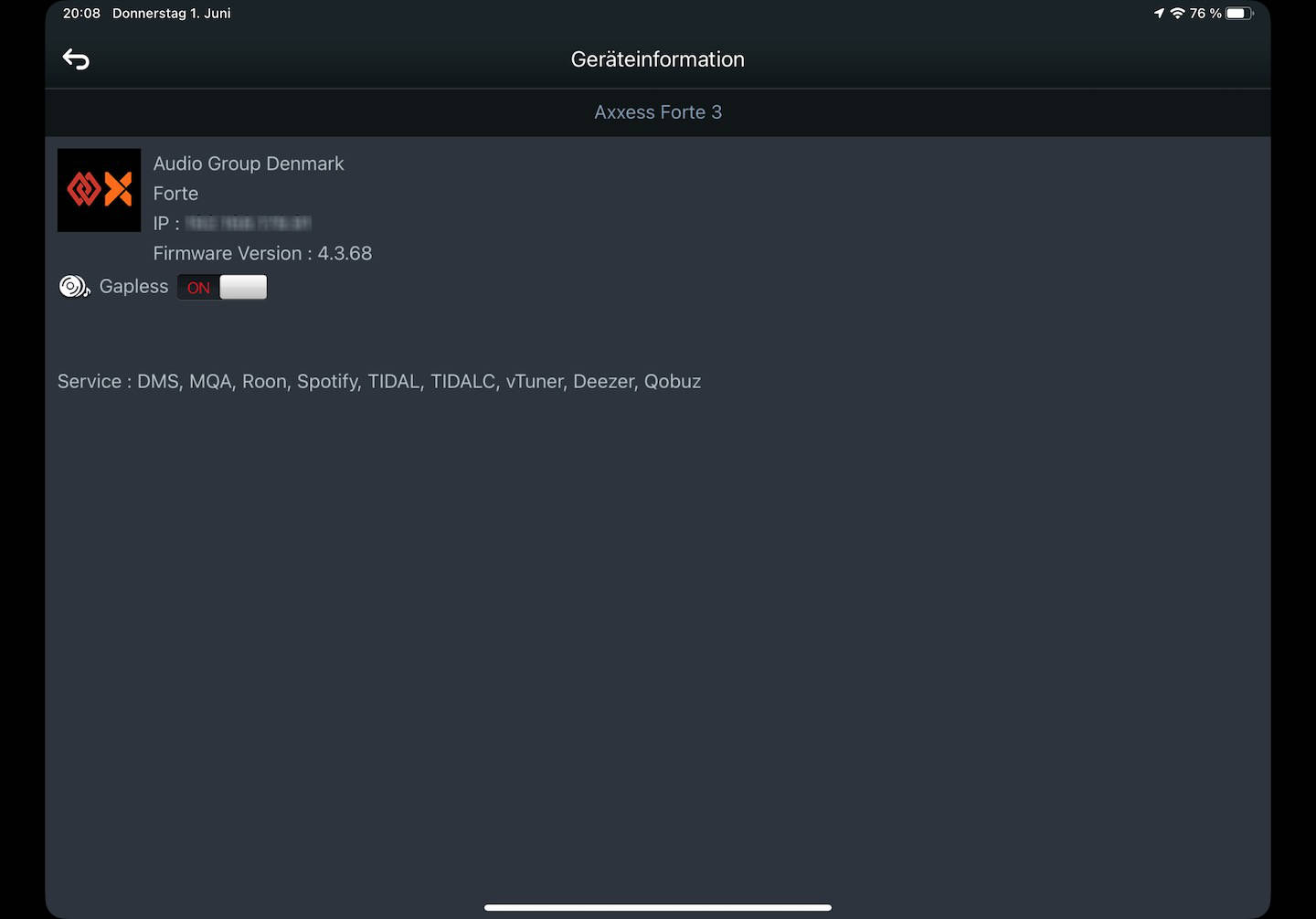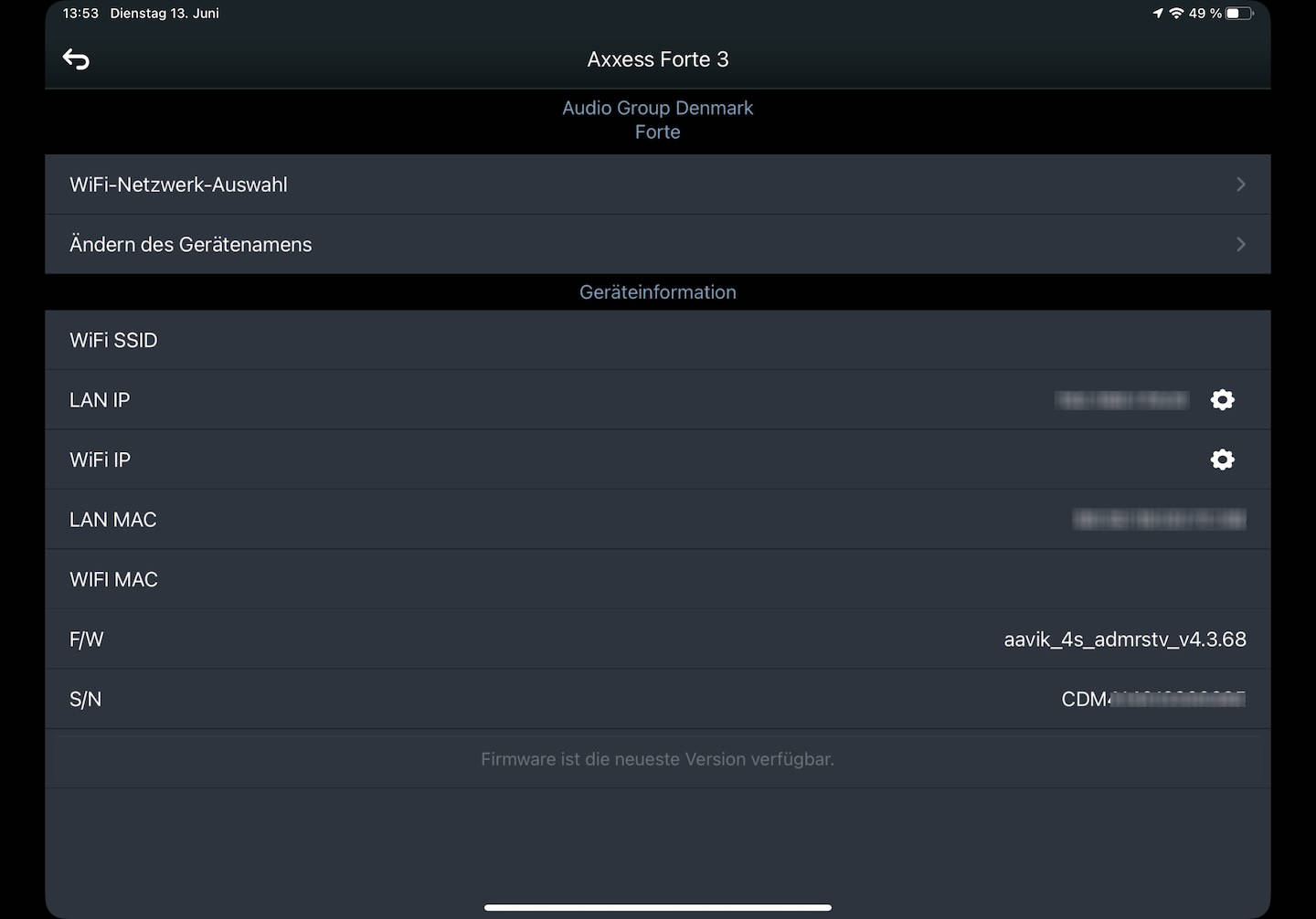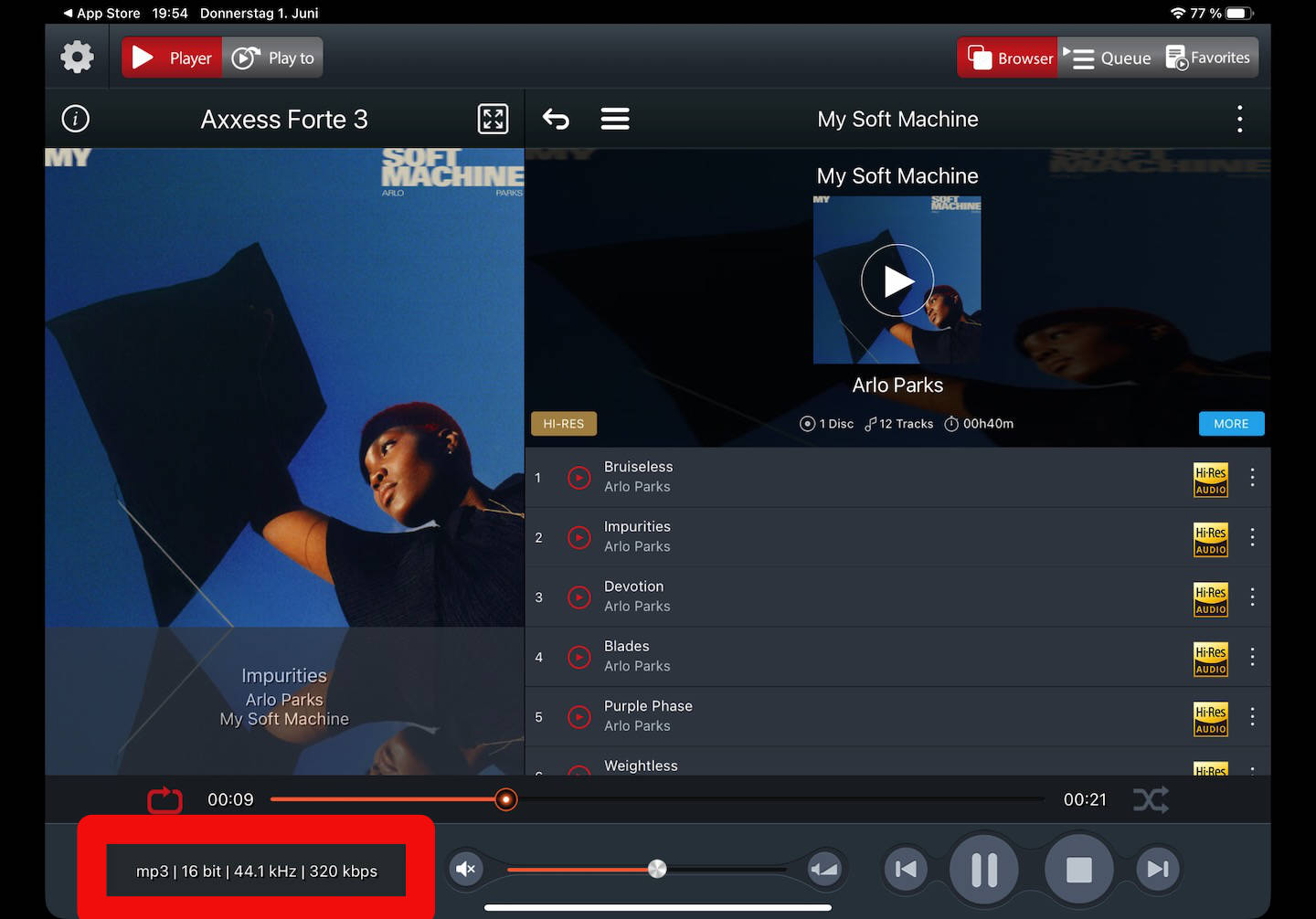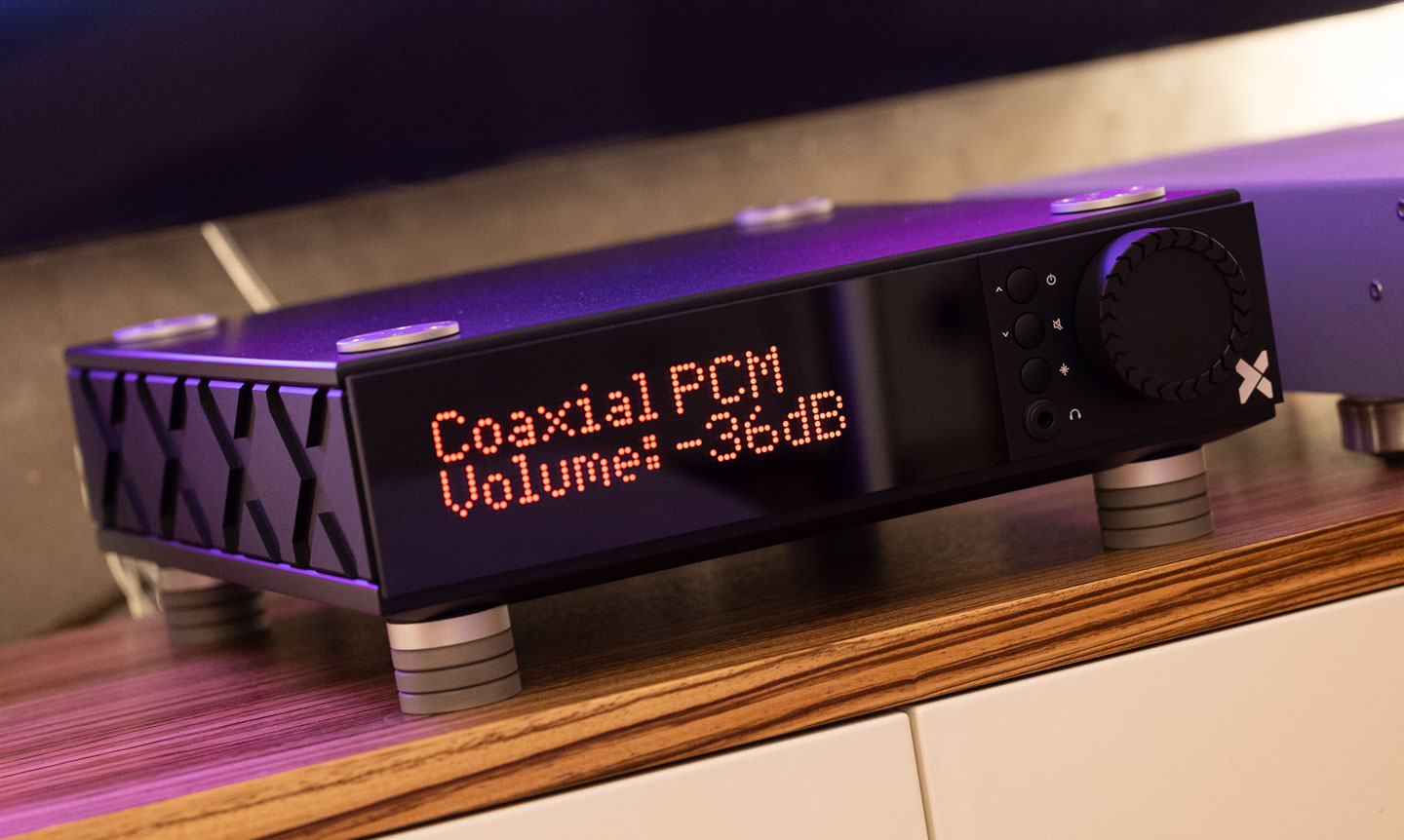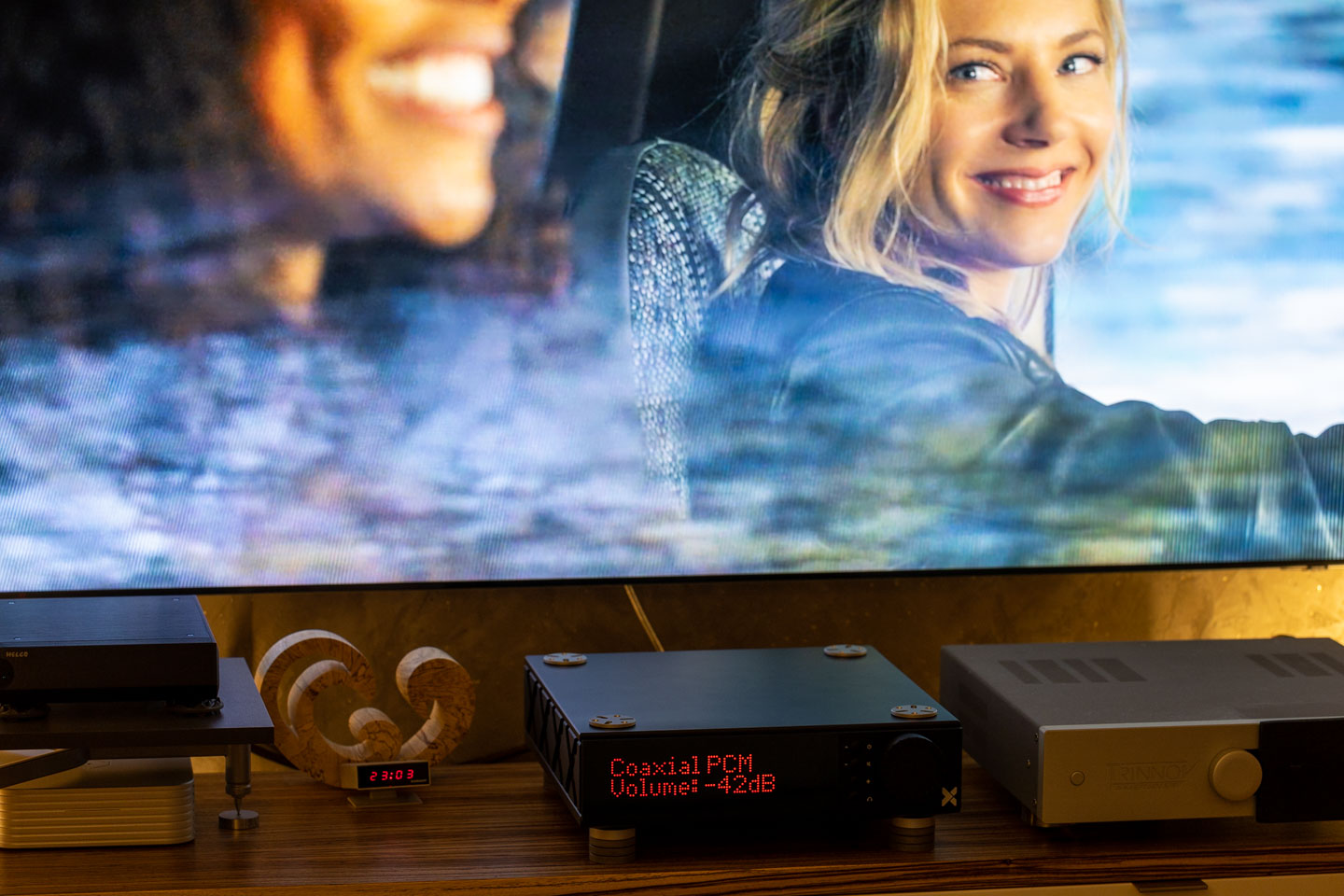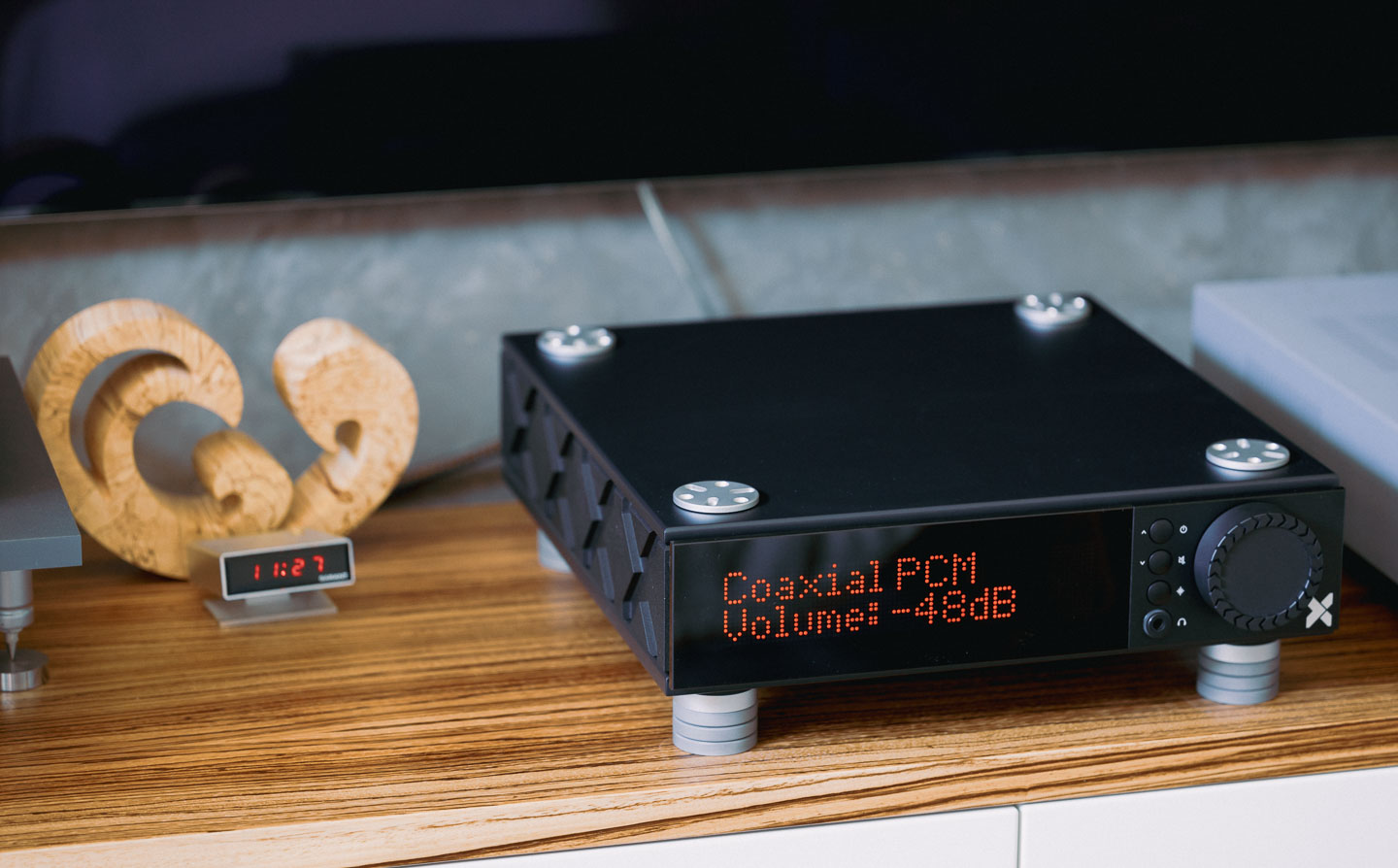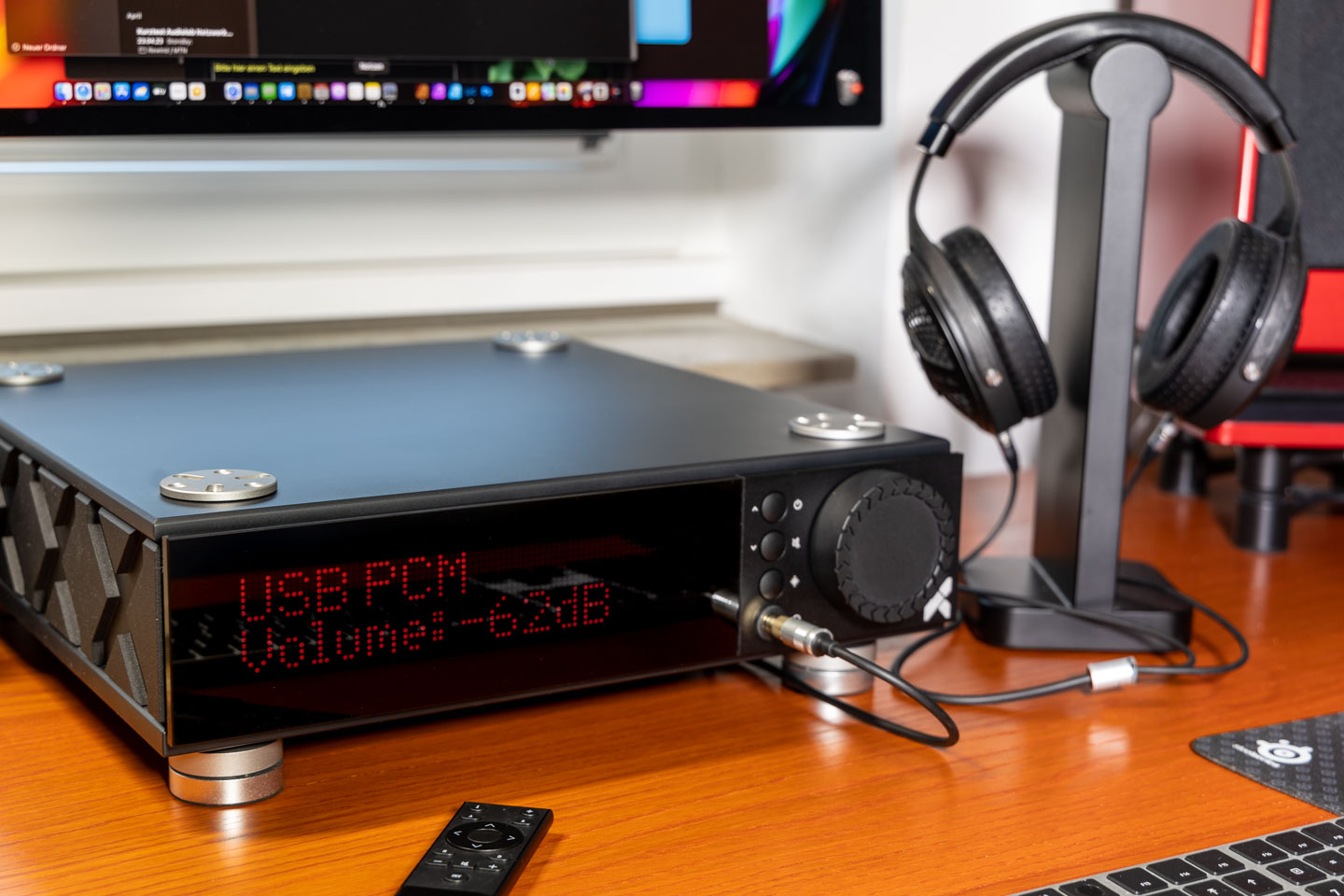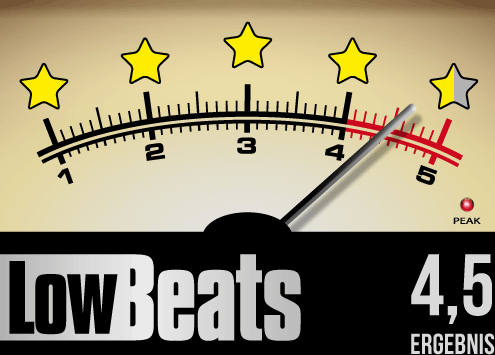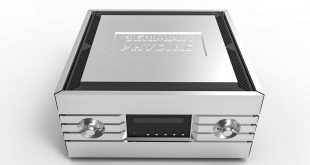Until now, Audio Group Denmark (AGD), with its brands Børresen (loudspeakers), Aavik (electronics), and Ansuz (cables/accessories), has focused entirely on exploring hi-fidelity frontiers, resulting in products that, in terms of price, only appealed to a particularly solvent target audience or extreme hobbyists. But now the Danes have added the AXXESS brand to their portfolio, which – nomen est omen – is intended to make their elaborate technologies and research findings more accessible to a normal-income audience. The first product of this label is the streaming integrated amplifier called AXXESS Forté, which is available in three expansion stages at prices of 5,000, 7,500 or 10,000 euros. Still a lot of money. LowBeats was one of the first magazines to test the Forté. This much in advance: The Forté is terrifically good.
The birth of the Axxess brand
Axxess is a made-up word derived from the English word Access. I don’t want to presume to have a share in the existence of the new brand, but already during my first visit to the Danish high-end manufacturer a good four years ago, I expressed my urgent recommendation to the makers around Michael Børresen and Lars Kristensen to develop products that are “more accessible” as soon as possible. And I am sure that other colleagues of the HiFi-Feuilleton have made similar statements, because the products of the Danes are simply phenomenally good and, in many respects, unique on the market, but also extremely expensive.
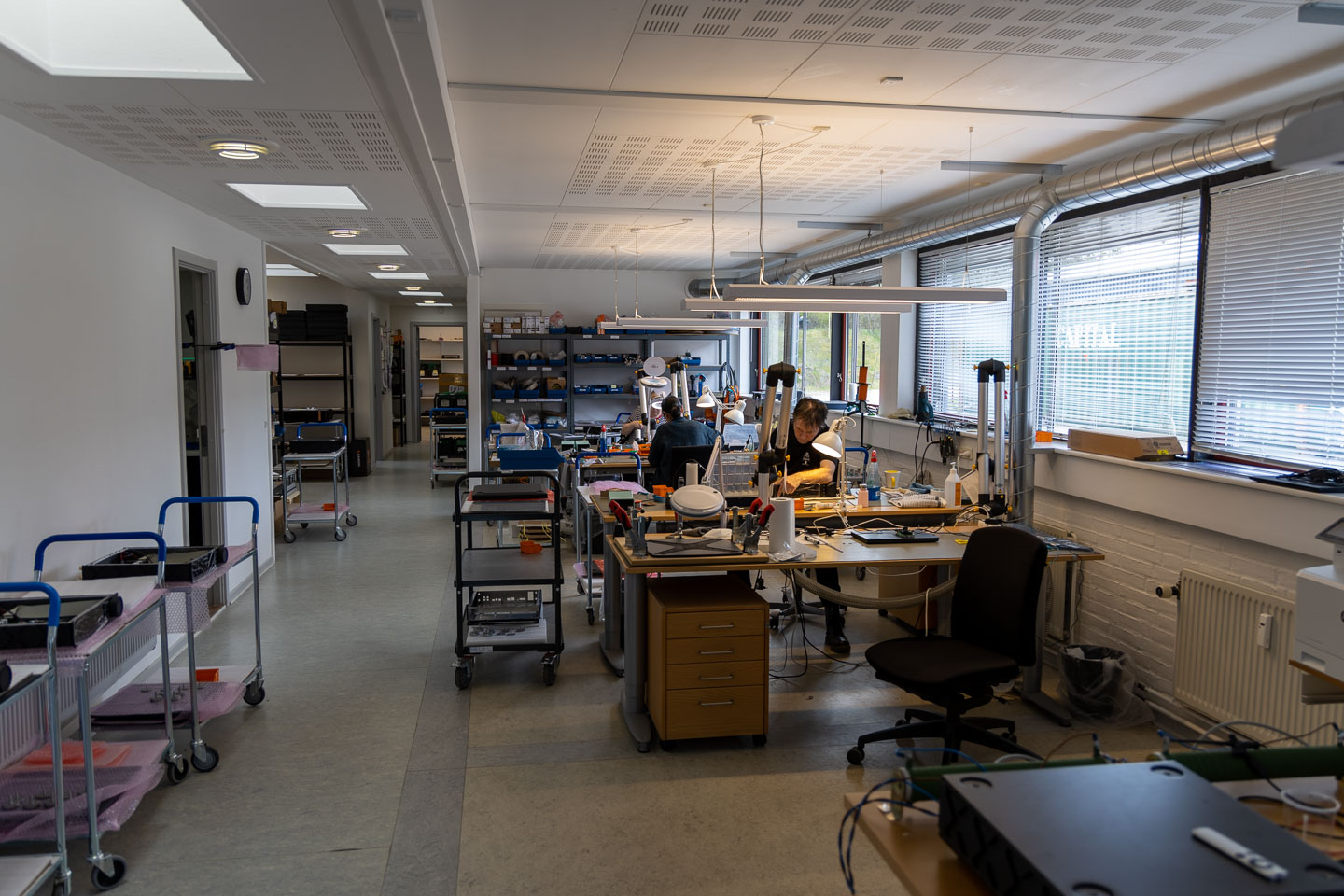
But the AGD makers have certainly known this for a long time, and an expansion of the product range into more affordable price ranges was planned long ago. First, however, it was a matter of exploring the limits and to be at the forefront of the HiFi Formula 1, or even to dominate it. It’s true that car comparisons always have a big limp, but Formula 1 is also in many ways a playground for researching new technologies that over time will also be found in everyday vehicles – in a more cost-effective form, of course.
The principle of electrical recuperation in electric cars, for example, comes from the KERS system (Kinetic Energy Recovery System) developed for Formula 1, which recovers braking energy. Shift paddles or controls in the steering wheel were also first used in Formula 1. So did lightweight composite materials, such as carbon and various other things.
The new streaming integrated amplifier Axxess Forté now contains many findings and components that were previously only found in the significantly more expensive devices from Aavik. It is also important to know that a large part of the AGD developments are located in areas that are not available at all or only to a certain extent at other manufacturers of hi-fi electronics. This means things like hand-wound Tesla coils, Tesla Square Coils on circuit boards, anti-aerial coils in the wiring and a huge portion of experience in the field of resonance control and how to apply it in the devices. The actual core of, for example, most amplifiers from Aavik (and now also Axxess), namely the power electronics, is based on modified, but relatively cheaply available Pascal UMAC modules, in the development of which Børresen claims to have had his fingers in the pie.

But apart from such individual acquisitions, so everything else is quite unique in the AGD world. Which brings me, after a long preface, to the introduction of the Forté….
Axxess Forté – different from the others
Function is one thing, execution is something else entirely. The Forté is a streaming integrated amplifier and accommodates a streaming module, a DAC, a preamplifier, a headphone amplifier and power amplifiers in a common housing along with a power supply. Exactly such a combination is also offered by many other manufacturers. Examples include the Cambridge Audio EVO 150, the Naim Audio Uniti Nova and – minus the headphone jack – the HiFi Rose RS520. Most of these highly integrated amps are priced below the Forté, whose starting price is 5,000 euros for the Forté 1 model. “More accessible” doesn’t mean it’s a bargain by any means. Just as a Boxster makes it easier to enter the Porsche world, it is still absolutely Porsche in terms of price, technology, and DNA.
Even on the outside, the Axxess Forté goes its own way. Its dimensions of 370 x 420 x 110 mm are still the most conventional of its appearance. The design and case materials, on the other hand, are both extravagant and unique.
Let’s start with the materials. The baseplate is made of a composite material not unlike the X material used in Wilson Audio speakers, and just as difficult to work with. The layer-based composite is hell on milling heads. The bottom plate is a good 2 cm thick and angled flat toward the outer edges, like an inverted, very flat truncated pyramid. The lid is made of the same material, not quite as thick, but also very finely milled. All edges and corners are nicely deburred, which not only looks great in detail, but is also very pleasant to the touch. Especially since the composite material does not feel as cold as metal.
Aluminum is a red rag to Børresen in some respects when it comes to sonic influences from hysteresis, for example. But he and his chief designer Flemming E. Rasmussen do not demonize this material, which is otherwise used everywhere, per se, because aluminum is very easy to work with. The side panels of the Forté are made of solid aluminum with a CNC-milled X pattern in reference to the brand and logo. In addition, the side panels are powder coated.
Like the Aavik amplifiers, the Axxess Forté also features the round and stylish aluminum plates on the top, which also serve as a cover for the cabinet screws and each of which has three ball receptacles. Equipped with twelve balls from the Ansuz range, another device with matching feet can thus be stacked on top and resonantly coupled – a hint at upcoming Axxess components?
So, it’s not surprising that the Forté also has the corresponding device feet, which offer no protection for the footprint and instead have a ball groove to accommodate optional Darkz device feet. More on that later in the text.
The components inside are mounted on a steel chassis in the Forté 1 and 2 models. The Forté 3 additionally uses a solid copper plate under the amplifier module.
This brings us to the differences between the three models. First of all, it is important to note that all three Fortés, which are simply numbered 1, 2 and 3, are exactly the same in terms of appearance, functionality, connections and performance. There are no compromises for the cheaper models in this respect. The differences refer purely to the AGD-specific interference suppression measures inside. Besides the just mentioned copper plate, which only the Forté 3 has, the differences lie in the type and extent of the equipment with coils and dither circuits. dither circuits. And this is how it looks in the tabular overview:
| Interference suppression measure | Forté 1 | Forté 2 | Forté 3 |
| Active Tesla coils | 36 | 72 | 108 |
| Active square Tesla coils | 72 | 144 | 216 |
| Aktive Zirconium Tesla coils | None | 4 | 4 |
| Dither circuits | 3 | 6 | 9 |
| Copper plate | No | No | Yes |
| Weight in kg | 7,9 | 8,1 | 9,0 |
| Price (RRP) | 5.000 € | 7.500 € | 10.000 € |
The Forté 3 was available to me for testing. I had a free choice. My decision fell on the top model, after I could make a sound comparison of all three variants during my visit in Denmark. More about that further back in the sound description.
Connections and equipment
As you would expect from a modern streaming integrated amplifier, the Forté offers a lot of convenience and is easy to set up. However, there are a few peculiarities to mention. The Forté is delivered without WLAN. For sound reasons, the AGD makers, as well as many other experienced manufacturers in this field, and also the author of these lines, prefer a wired connection via Ethernet. If you absolutely want to or have to use WLAN because a suitable cable connection is perhaps not possible, you can upgrade it with a compatible USB WLAN adapter. The Forté has two USB-A ports for this, just like for connecting an external hard drive.
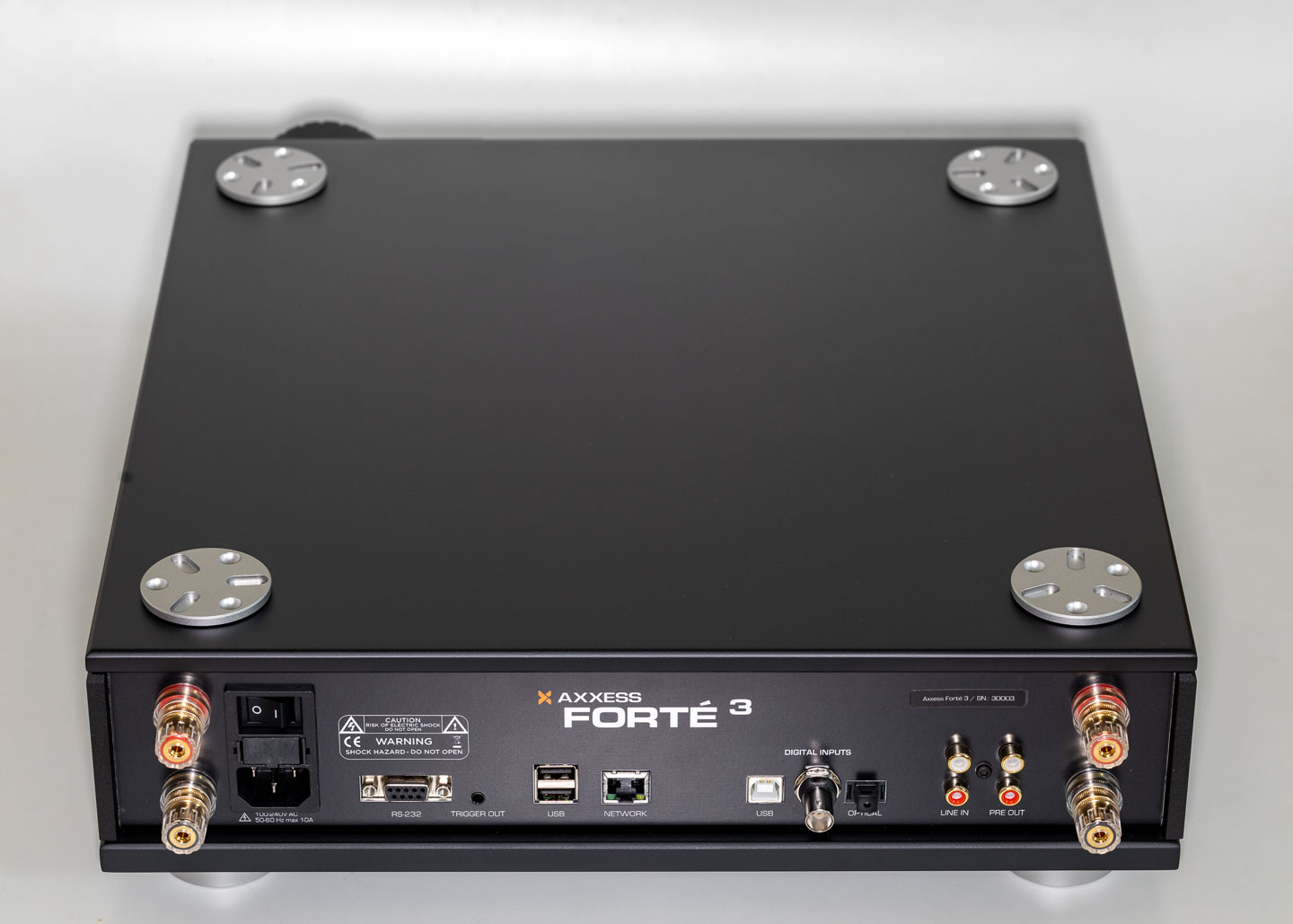
While we’re on the subject of connections: the Forté doesn’t exactly flaunt with connectivity options, but it has all the essentials on board. Digitally, there is one S/PDIF-Coax and one Toslink input, as well as USB audio. HDMI is not included. There is only one RCA input for analog. If you want to connect phono, you’ll need an external phono preamp. Fortunately, AGD did not omit the adjustable Pre OUT, which can be used to connect power amplifiers, active speakers, or even a subwoofer. And there is a Home Theater Bypass that can be activated via menu, with which the internal power amplifiers can be controlled directly from the outside via the Line-In.
As with my reference amplifier, the Aavik I-580, the Forté’s speaker terminals are located on the far left and far right of the rear panel, which I personally find much more convenient than having jacks squeezed somewhere between the source connections. I’ll talk about the RS-232 serial port later.
One of the most striking details of the Forté and its brothers from Aavik is the large display on the front, consisting of red LEDs. This is where opinions are bound to differ. Where some, such as HiFi Rose, rely on a large and high-resolution graphic display with touch function, while others rely on the display options in the associated app and offer no or only rudimentary displays on the device (such as Yamaha with the R-N2000A), the AGD solution is a successful compromise. Although it cannot display album covers or very much detailed information at once, the LED matrix has other qualities in return. First of all, unlike LCDs and OLEDs, it doesn’t generate high-frequency garbage that could affect the circuitry. Also, despite its size, it’s visually quite discreet and doesn’t stand out too much. And it is excellently readable even from a very long distance.

The display is dimmable in several levels and there is also an auto-off function where the display automatically turns off after an adjustable time after the last action. I love this display!
The operation on the device is done with only three buttons. Some functions are only available via the included remote or the app. The large and smoothly muted volume control is also very pleasant. On the front underneath the three buttons is another 6.35 mm jack for headphones. Instead of an Apple IR remote as before, Forté owners can enjoy a slightly larger remote control. It offers more buttons with a good feel and a decent pressure point. Among them is also a rare function for inverting the phase, which should especially please CD lovers.
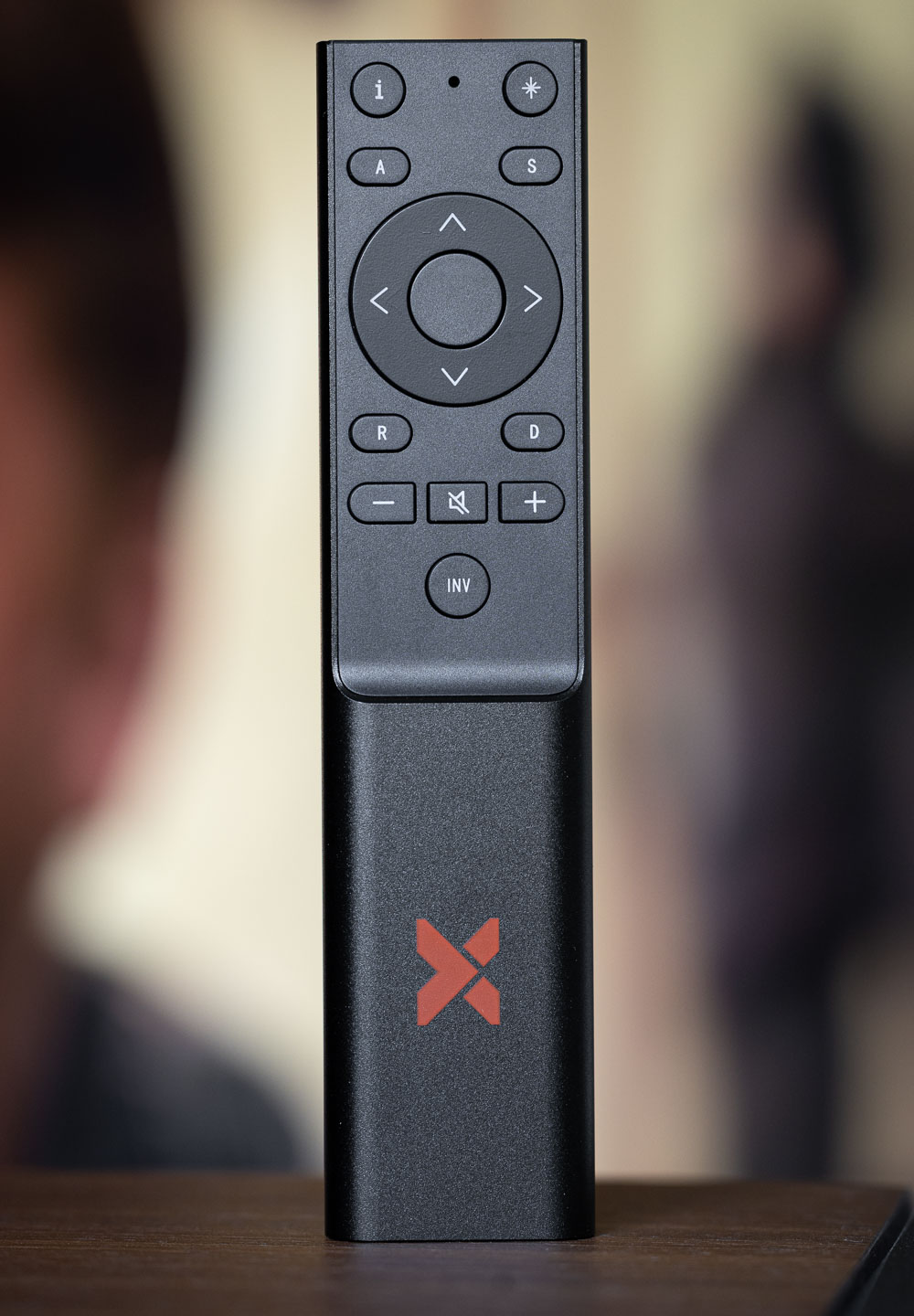
Some keys (S, R and D) are not assigned for the Forté and are possibly intended for future Axxess devices. Some are assigned twice. For example, the volume can be adjusted up and down via the plus and minus keys, and also via the arrow keys. However, I’m not completely satisfied with this remote control, which I’ll explain in more detail later in the criticism section.
Cool Runnings
Performance and efficiency under one roof: The manufacturer quantifies the output power with two times 100 watts into 8 ohms. This is a rather conservative specification. In fact, it is rather around 130 watts. An appropriate amount of power for a very wide range of speakers. Especially since this value is accompanied by high load stability and speaker control (damping factor) thanks to the Resonant Mode power supply and a battery of fast capacitors.
Speaking of Resonant Mode. What does that actually mean? Basically, it means that the switching power supply here is not “switched” with square wave signals as usual, but with high frequency sine waves. So far, only relatively few manufacturers use this principle, although it actually has only advantages. Both from a technical and a sonic point of view. But T+A, for example, has also discovered the principle for itself and relies on a similar switched-mode power supply with sine waves in the A 200 stereo power amplifier, which serves LowBeats as a reference in its class.
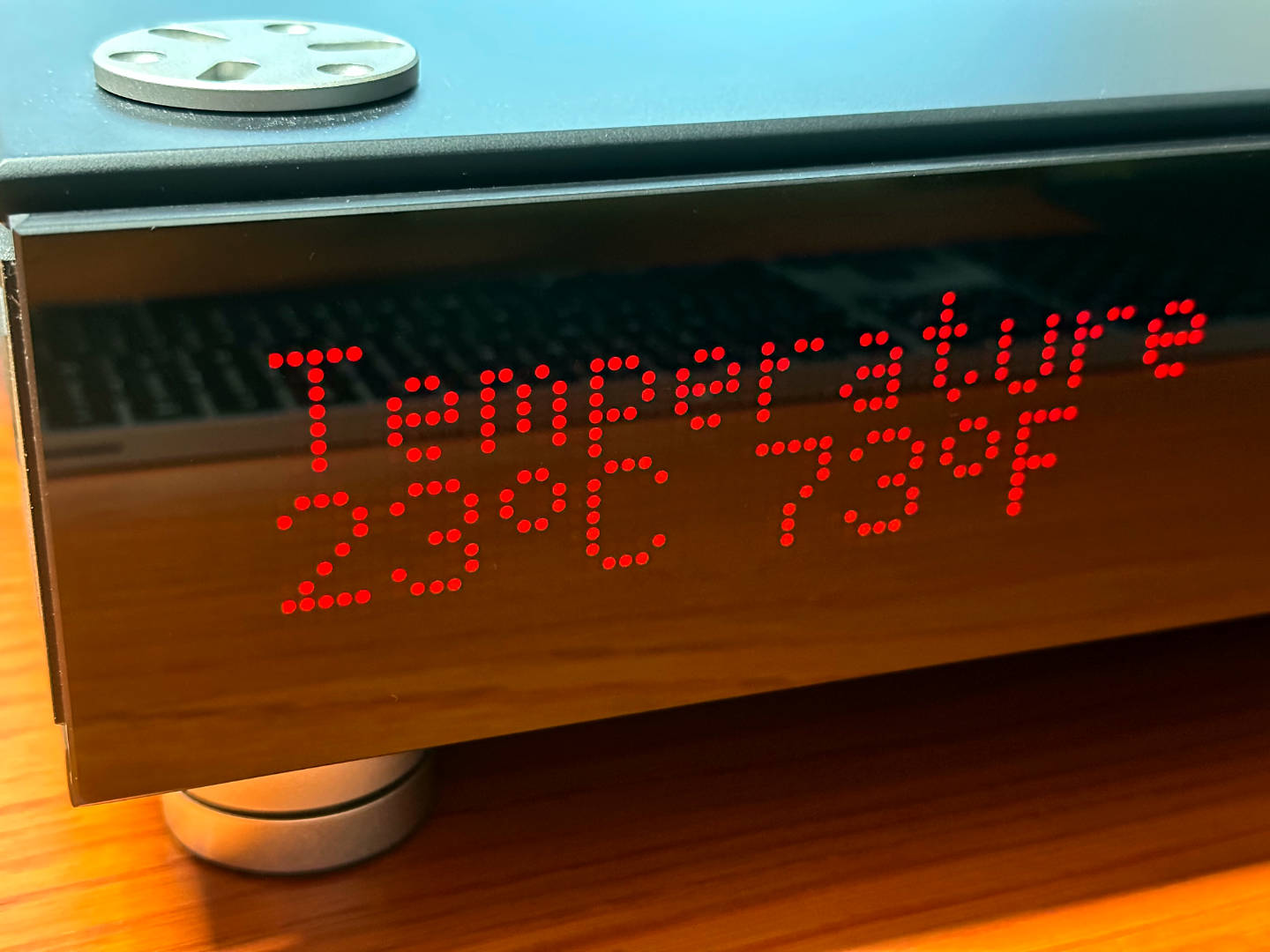
The circuit concept with the Pascal UMAC power amplifiers and Resonant Mode power supply is extremely energy efficient. In operation (idle), the Forté consumes just 13-14 watts. The integrated temperature display rarely shows more than 22-23 degrees Celsius. Except when the room temperature is higher. Even during longer level orgies, the amp doesn’t even get warm to the touch. Thus, the Forté does not unintentionally become an additional heater even on hot and muggy summer days.
The standby consumption is around 0.5 W according to EU standards. The Forté does not have a network standby mode that can be accessed and activated via the app. Switching on from standby is therefore always accompanied by about 30 seconds of waiting time for the startup sequence and network connection. That is completely okay for me. If you absolutely need network readiness around the clock, you can simply leave the Forté on. This way, it still consumes less power than a dCS Bartók APEX in standby mode.
Criticism? Yes, some
Nothing in the world is perfect. I don’t know of any streaming solution that doesn’t have one or two things to criticize about its operation. Whereby some things are simply a matter of personal preference. The following points of criticism should therefore not be overrated. They are things that could have been solved differently or better in my opinion.
Perhaps the biggest criticism: Firmware updates are only possible offline with Windows PC via the (RS-232) serial interface. (Important distinction: Updates of the internal streaming software are directly and easily possible via the Internet). In my test device with an early firmware version, there were still a few bugs. For example, playback was stopped when playing via USB and pressing the mute button. And the pre-out was not muted when mute was pressed, which can lead to interference when using headphones, for example if the connected subwoofer keeps rumbling. Some of these errors have already been fixed via firmware update, according to AGD. But due to the lack of a Windows PC with a serial port, I could not install the update. Since I have no one with suitable Windows hardware in my environment, the device would have had to be sent in. Apple users like me would at least have to contact their dealer in such a case.
An online update function for the firmware, or simply via download and an USB stick (as possible with the Audiolab 7000A, for example), would definitely be more user-friendly.
My second point of criticism concerns the device feet. I can understand the strategy with the optional Darkz feet for the high-end Aavik models, but for the Axxess I would have liked to see Darkz included, or an already integrated, or even slimmed down solution with a lower height.
It would make sense if AGD would offer cheaper Darkz device coasters as soon as possible, because without Darkz the feet of the Forté are quasi incomplete. In a set of four, these should not cost more than 500 euros (better less). With the currently available Darkz, at least 1,120 euros for a set of Darkz C2t are added to the device price, which is not in a healthy ratio and only makes “access” to the AGD world unnecessarily difficult again.
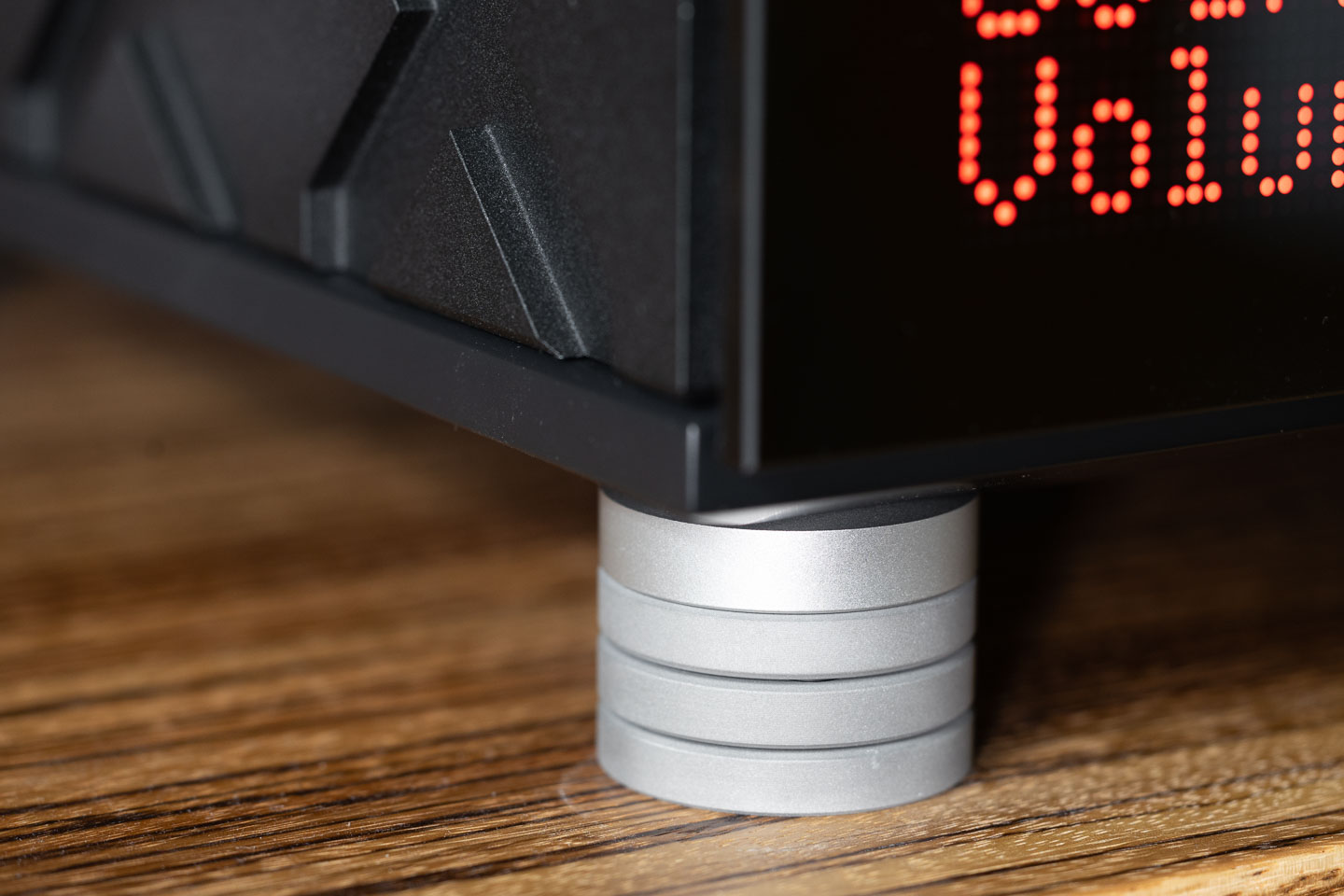
For this reason, I will introduce a cheap “workaround” at this point. Amazon offers a four-part set of device feet for around 30 Euros. Their construction works similar to the Darkz principle with three balls. The lower half fits exactly to the feet of the Forté with its ball groove. Sure, this isn’t a full replacement, but at most a third of the Darkz, and isn’t made of any special materials or coatings either. The surfaces aren’t as classy as AGD’s, and the balls are only stainless steel instead of titanium. But you can at least set up the Forte appropriately with it, and it almost looks like a factory solution.
Practice
Apart from the previously mentioned points, handling the Forté in practice is very pleasant. During the test, I did not have any dropouts or other problems with any of the possible playback paths.
The corresponding app can be found in the iOS App Store for iPad under the name “AudioGroupDenmark”, which is probably due to the fact that other, unrelated iPad apps with the name “Axxess” already exist. The app is based on mconnect. For iPhone and in the Android store, the mconnect control app, which is not “branded”, i.e., does not have the AGD logo and individual design, is used. The software is one of the more sophisticated of its kind and allows access to the services Qobuz, Spotify, TIDAL, TIDAL Connect, vTuner and Deezer. MQA is also supported. At the time of testing, the Forté was still in the certification process for Roon Ready, which experience shows can take a few months. However, the Forté can already be used with Roon via USB audio.
I already mentioned the good readability of the display. Artists and titles are also displayed here when streaming, whereby longer names are scrolled through the display once at the beginning. The display is still easily legible even from four or five meters. Only a few competitors offer that.
As already mentioned above, the Forté hardly gets warm during use. And nothing can be heard from it. No humming, no chirping. Even with the ear directly on the lid, only a very vague humming can be heard, but maybe that’s just in my head … With the exception of the Aavik components, I don’t know of a quieter amplifier – exemplary. And of course, this fits into the picture of the AGD philosophy to banish any noise and hum as consequently as possible.
And then the music: the listening test
The goal was to port the high-quality low noise, background blackness and dynamics of the Aavik amplifiers into a less expensive amp. They succeeded. The Forté 3 has all the basic qualities of its bigger brothers. Of course, it had to compete with the Aavik I-580, which costs twice as much and has no streaming and DAC function. I knew beforehand from my visit to Denmark that it would not be able to beat it. But what the Forté delivered in my setup to the Børresen 02 SSE was still outstanding.
The only point where noticeable reductions compared to the I-580 could be discerned was in the dynamic qualities. Thus, the Aavik integrated amplifier was able to keep the Axxess at bay with even more punch, low bass control and ultimately, of course, power reserves (the I-580 delivers 2 x 300 W into 8 ohms). Even at very low levels, the I-580 seems a touch more confident. But in terms of sensitivity, the ability to bring out micro details, and spatial precision, the gap was clearly smaller.
The already mentioned Rose RS520, which is priced well below the Forté 3 at 3,700 Euros, had to serve as another opponent. No chance for the Rose. Through the comparison tests in Denmark, I also know where the differences between Forté 1, 2 and 3 are located and even the smallest Forté should keep the Rose, which sounds quite excellent for itself and in its price range, at a distance.
The Forté’s integrated non-switching Class-A headphone amplifier also fits into this picture. It is definitely more than just a nice extra but pleases with an equally fine and powerful performance on headphones of varying impedance and sensitivity. The differences between the three Forté expansion stages express themselves in the quietness and the tonal contrast behavior. Models 2 and 3 each increase the feeling of sound purity by a not inconsiderable amount, which ultimately always gives the music a bit more naturalness. In this respect, all three Forté are more than a nose ahead of amplifiers like the Rose and others I know. If you don’t want to pay the extra price for the Forté 2 or 3, you can start with the 1 without hesitation, because it’s already in a league of its own in terms of audiophile qualities in the class of streaming amps. Long-term listening pleasure is thus assured.
Interlude with accessories: Sortz
Before I come to the conclusion, I would like to briefly introduce an accessory category from the Ansuz range, the so-called “Sortz”. In simple terms, these are terminating plugs for unused sockets on the devices.
No matter if RCA, XLR, USB, Ethernet etc.: Every open socket is a gateway for electromagnetic interference. Each of these sockets has a more or less strong antenna effect in the high frequency range. It is therefore obvious to close these gateways. There have been relatively simple approaches to this in the past, but the AGD men naturally use their in-house Tesla coils and other means in their Ansuz Sortz connectors to cancel out noise on both the signal and ground sides – similar to noise cancelling in headphones. Børresen calls the principle “Common Mode Cancellation”.
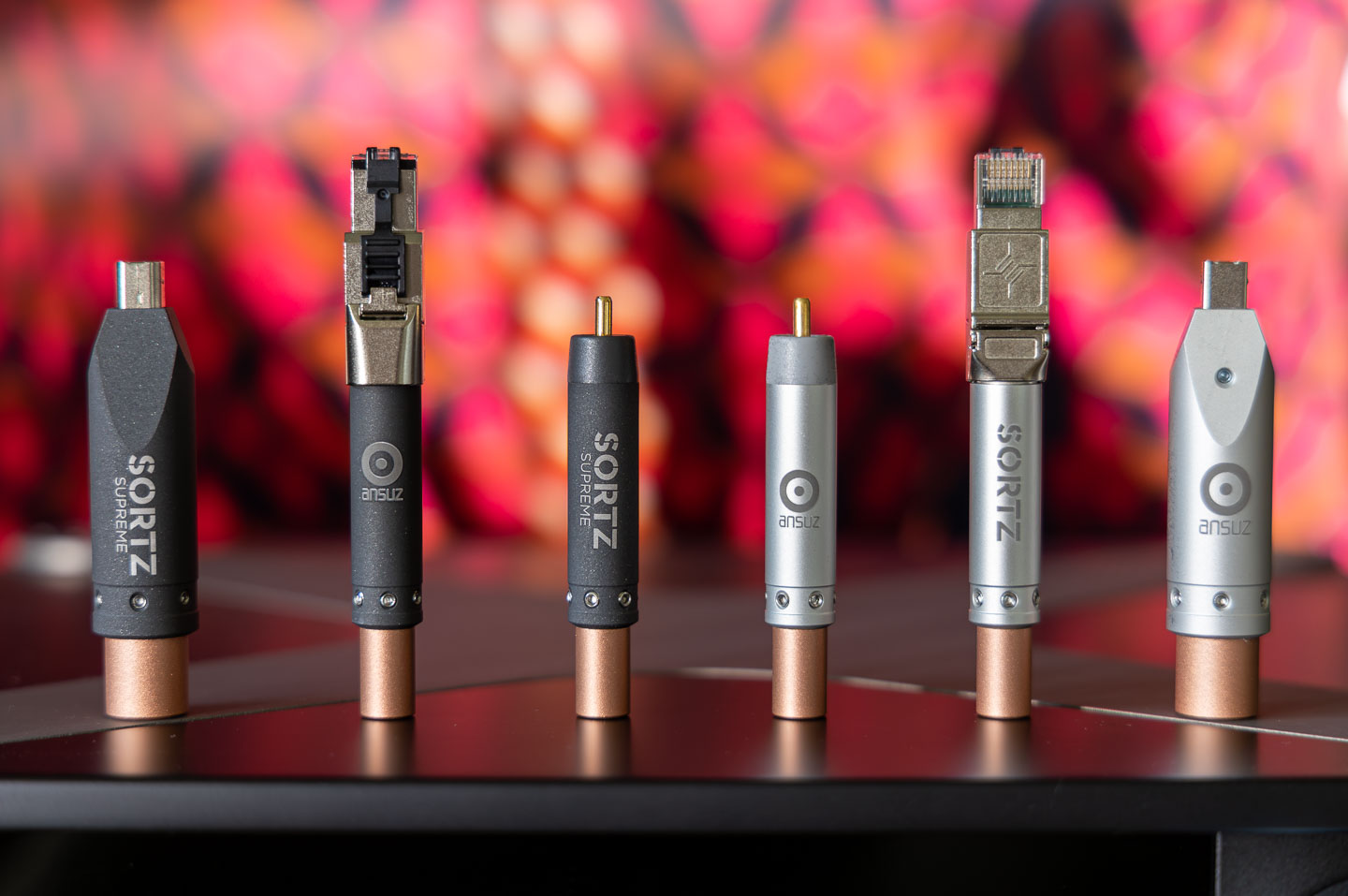
In addition, depending on the variant – Standard, Supreme or Signature – the housings of the Sortz plugs are incredibly fancy and elaborately made. They are clearly luxury accessories, but they are meant to have real sonic value.
AGD sent me along with the Forté three each of Standard and Supreme Sortz for RCA, USB and Ethernet. Plus, an Ansuz power cord C3, which I will present in more detail on another occasion.
You have to be a bit (sound) crazy to pay a minimum of 900 euros for a piece (not a pair) for such connectors. And I do not claim that Axxess customers would be the best target group for it. But the plugs are a real recommendation for the uncompromising HiFi enthusiast who has otherwise already used all the tuning tricks.
No matter which of the plugs I plug into any free socket of my system: The already very deep black background of the Aavik components becomes even a touch blacker, the musical contrast thus a bit more lifelike and clearer. Even at the network switch or in the second network socket of the Rhein Z1 Plus Server, a slight positive effect is traceable.
The ideal case would of course be to close off every open socket with matching Sortz. But this is likely to be an extremely costly endeavor, depending on the number of sockets. I have seen the most massive collection of Sortz at the manufacturer’s reference amplifier I-880.
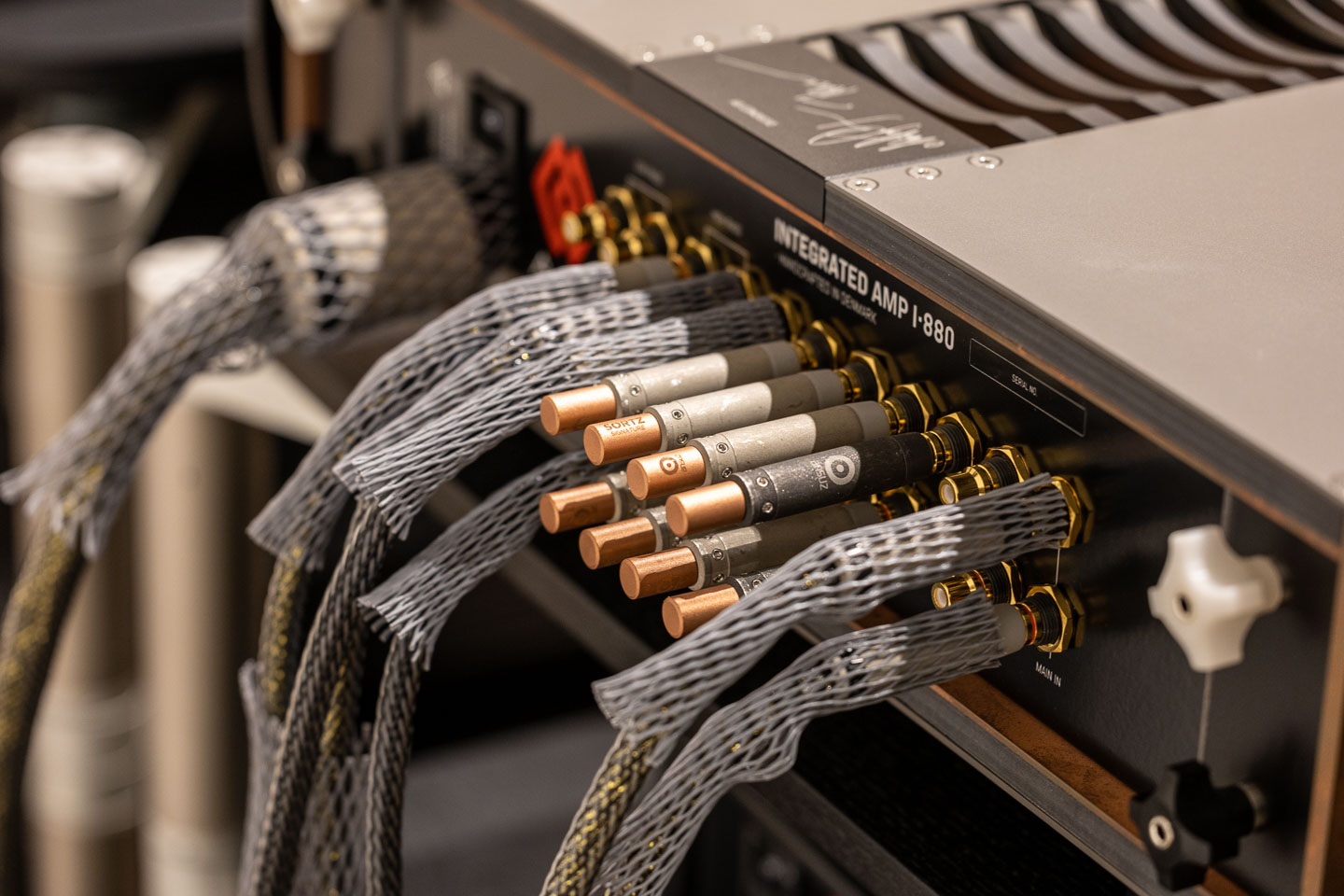
Perhaps the Danes will eventually manage to offer Sortz here, too, at somewhat more mundane prices. More Axxess for the people, please!
Conclusion Axxess Forté – the ticket to the AGD world
The shoe must fit. If it fits, then a dream comes true. The Axxess Forté may not have the largest color touch display or score with the most software gimmicks, but it combines the convenience of a highly integrated, energy-efficient, and space-saving component with ease of use and top sonic performance. It’s simply the best-sounding “all-in-one” streaming amp I know. And although I was a bit skeptical about its design at first, I like it more visually with each passing day. It’s a distinct and modern blend of clean edge, with well-done accents, that sets it pleasantly apart from the mass of standard and retro designs.
On the other hand, I cannot unequivocally answer the question of which of the three model variants is the best. The Forté 3 is absolutely my favorite sonically and would be my choice. But the Forté 2 and 3 models are close on its heels. The question boils down more to personal preference and the price you would be willing to pay. 5,000, 7,500 or 10,000 euros is a not inconsiderable range.
Soundwise leading in its class and convincing in terms of workmanship, the Forté only has to put up with deductions in the practical score because of the lack of price-adequate Darkz device feet and the inconvenient procedure for firmware updates. It is still enough for a top rating and explicit recommendation from the editor. Forté 1 and 2 would have been rated 4.7 and 4.6, respectively, in terms of price class if they had been in the test here.
Rating
Sound qualityUsabilityBuild QualitySummary |
| The rating always refers to the respective price range. |
| | Soundwise one of the best streaming amps ever |
| | Top workmanship and material quality |
| | Easy installation and operation |
| | Pre-Out and Home Theatre Bypass |
| | useful device foot additions (Darkz) only against high surcharge |
Distribution
Audio Group Denmark
Rebslagervej 4
9000 Aalborg Denmark
[email protected]
Price (manufactor recommendation):
Axxess Forte 1: 5.000 Euro
Axxess Forte 2: 7.500 Euro
Axxess Forte 3: 10.000 Euro
Technical Data
| AXXESS FORTÉ | |
|---|---|
| Concept: | Streaming integrated amplifier |
| Power: | 2 x 100 watts into 8 and 4 ohms |
| Streaming: | DLNA / UPnP / Roon Ready (in Vorbereitung) / Spotify Connect / TIDAL Connect / Qobuz |
| Special features: | Elaborate measures for noise suppression / interference suppression, LED matrix display, housing made of composite material |
| Inputs: | Digital: RJ45 LAN, USB audio, S/PDIF Coax+TOS (WLAN optional), Analog: 1 x Cinch Line-IN |
| Outputs: | Pre-OUT analog, Speaker, 6.35 mm jack for headphones |
| Dimensions (B x T x H): | 370 x 420 x 110 mm |
| Weight: | 9 Kilograms (Forté 3) |
| All technical data | |
More from Audio Group Denmark (German):
Test Standbox Børresen 02 SSE: mehr Silber, mehr Musik?
Test Aavik I-580: Dieser Vollverstärker macht vieles anders – und klingt überirdisch gut
Der Vollverstärker-Doppeltest: Aavik I-180 vs Aavik I-280
Test: Ansuz Acoustics LAN PowerSwitch X-TC: überlegenes Netzwerk-Streaming



